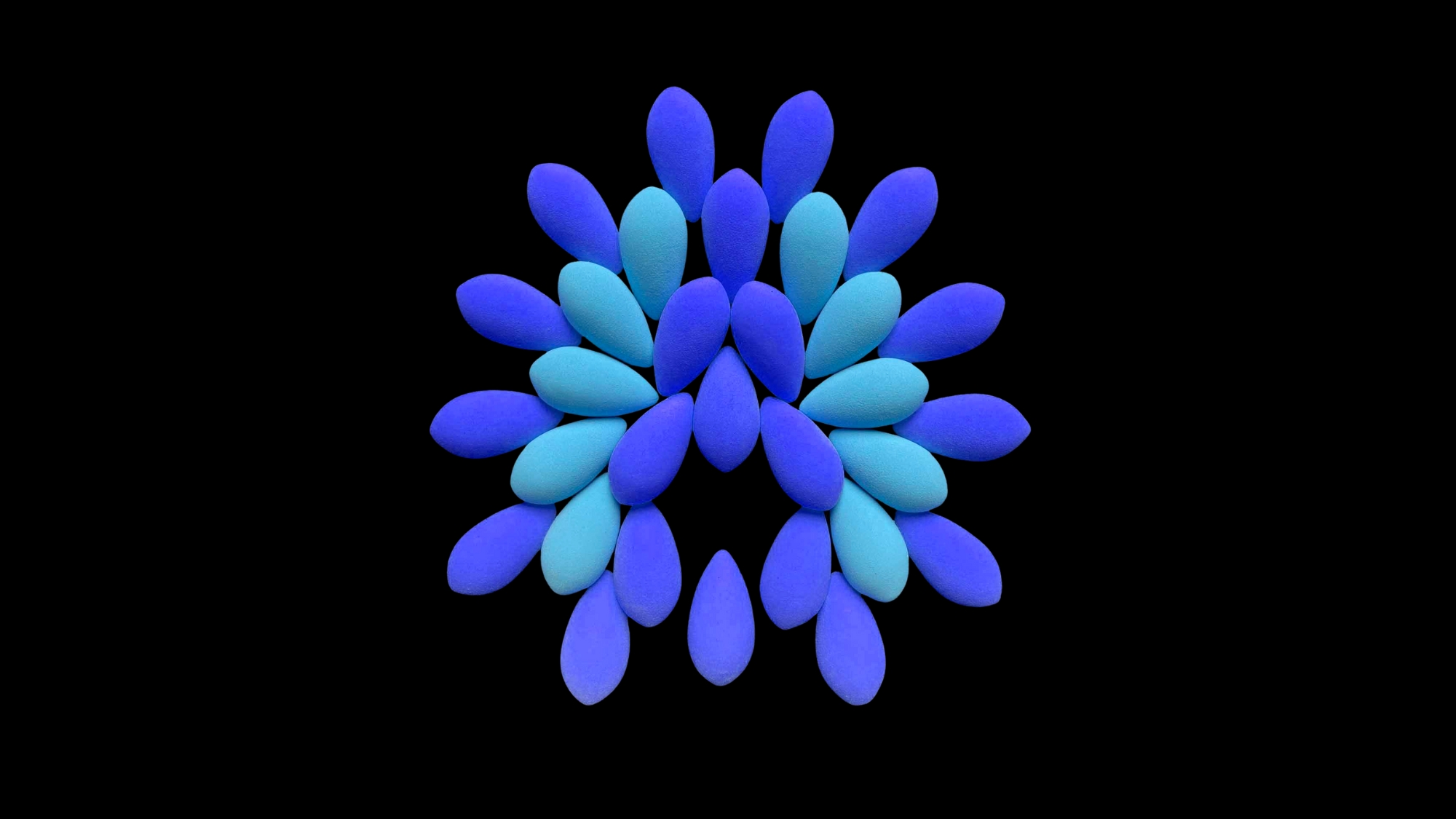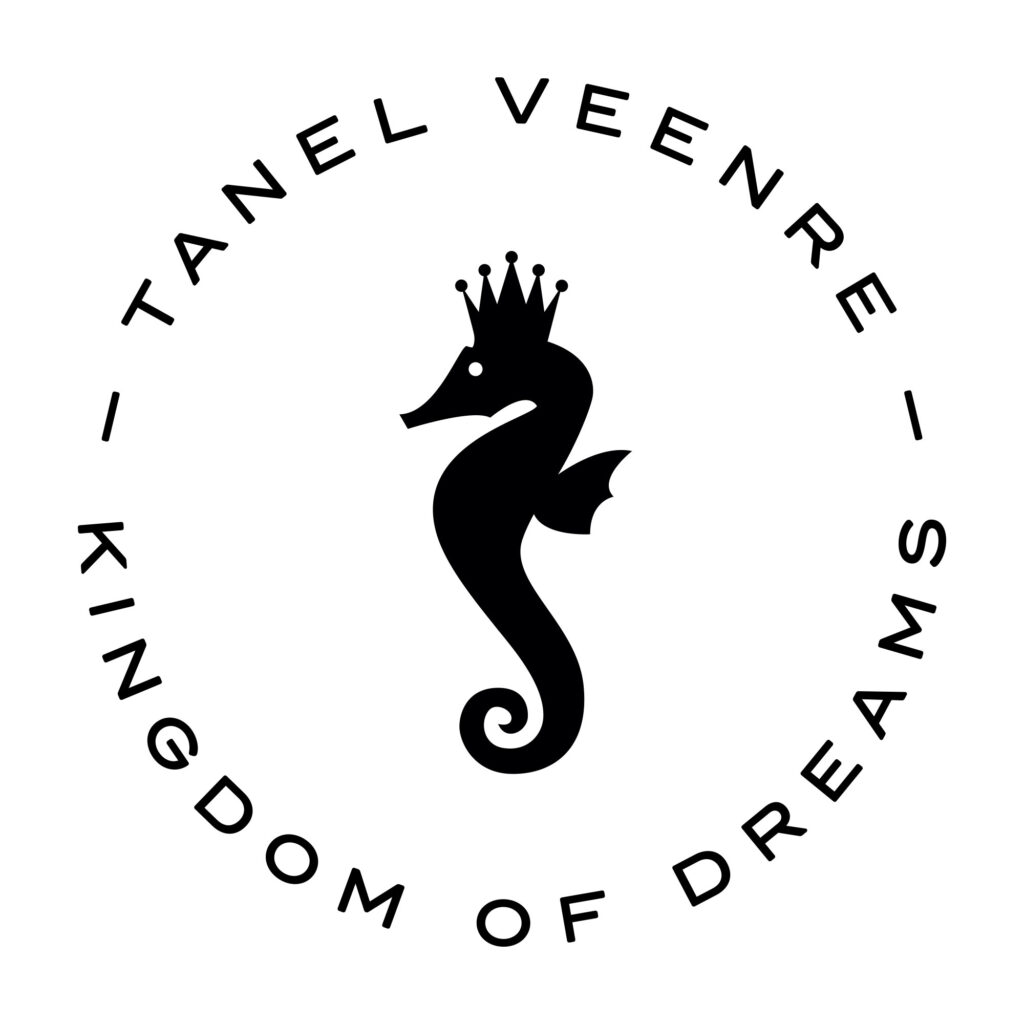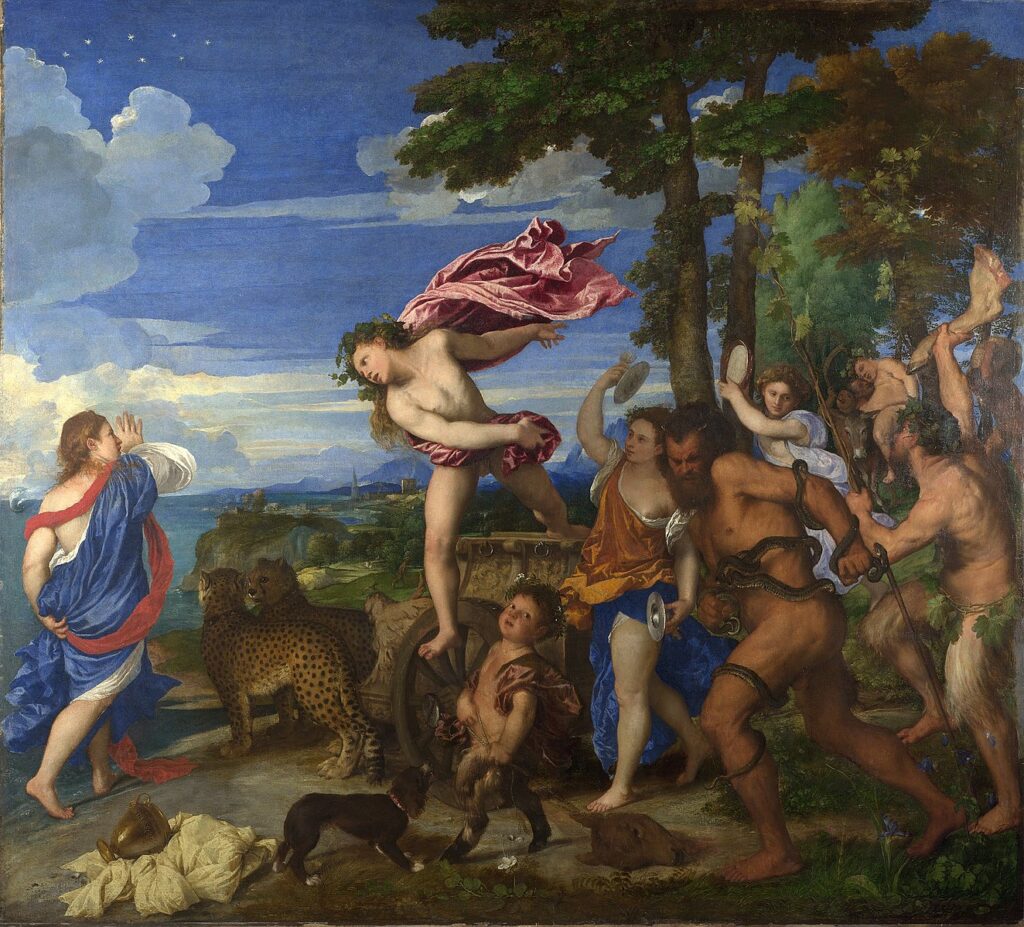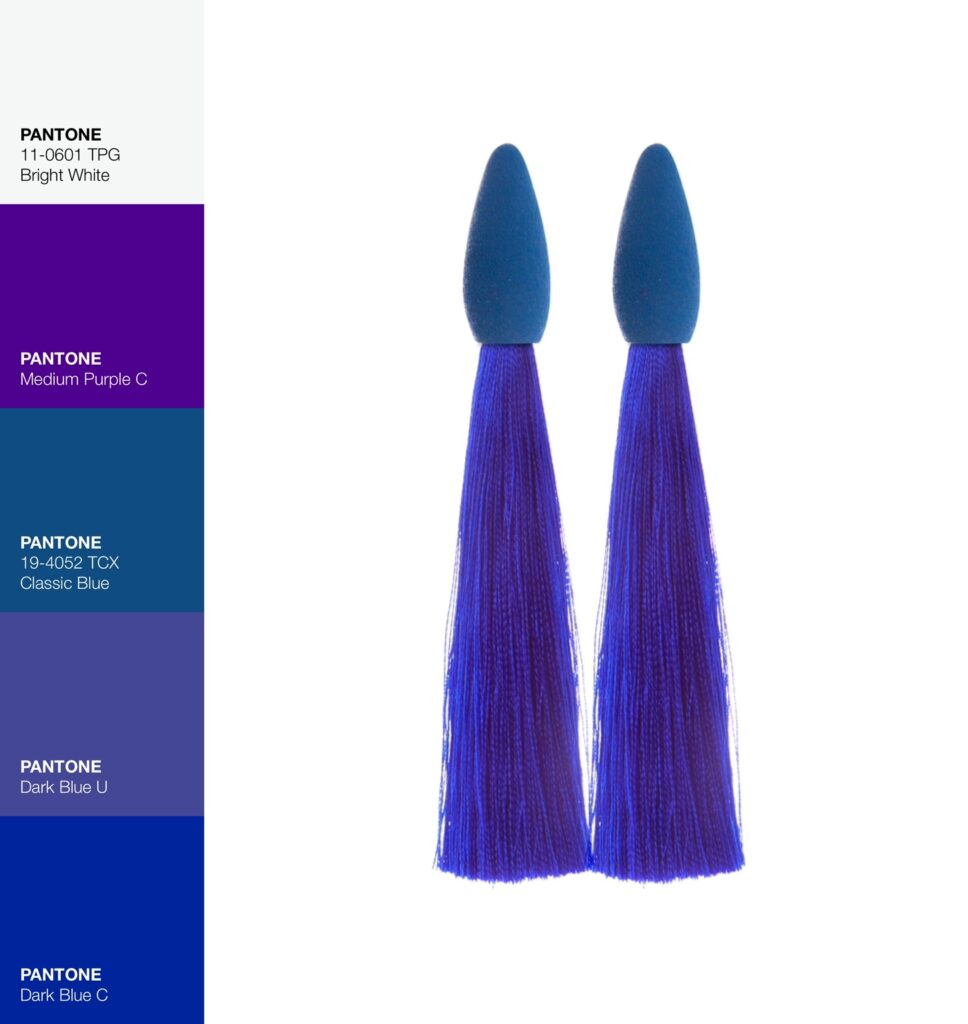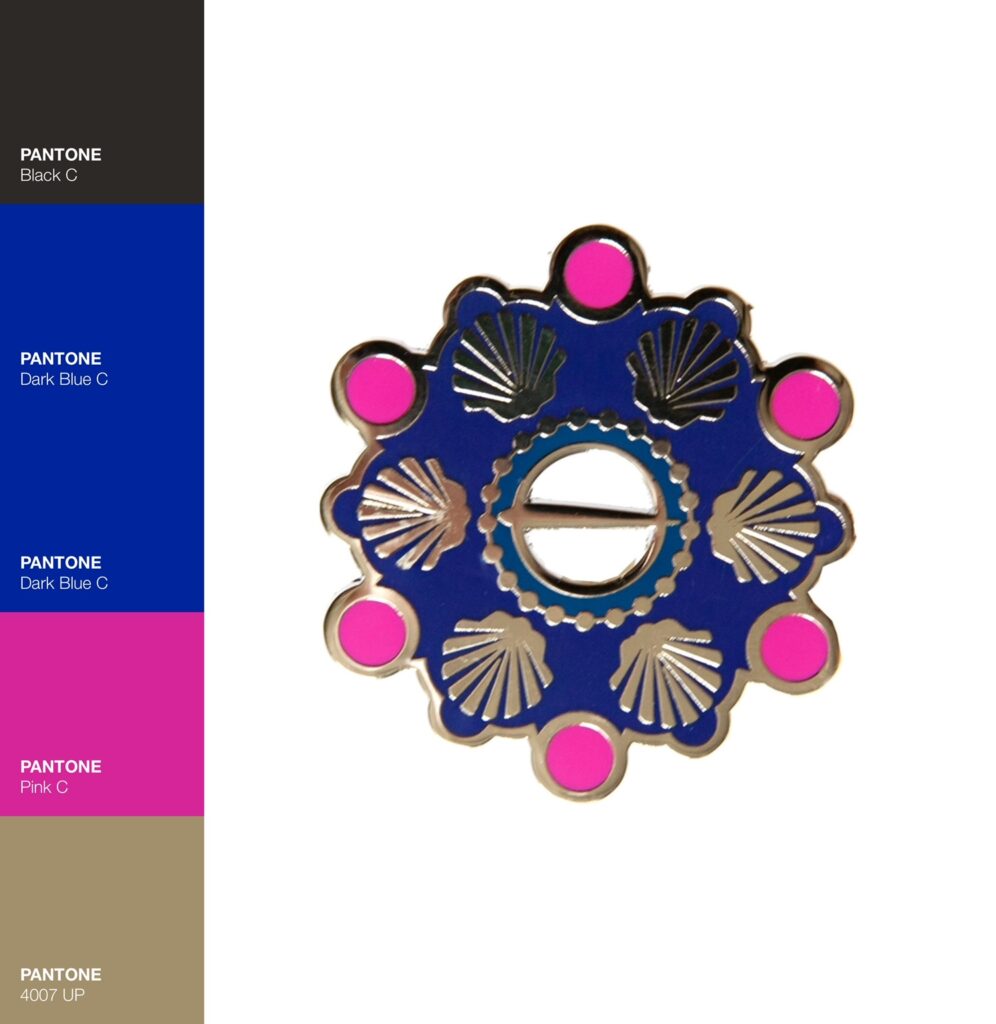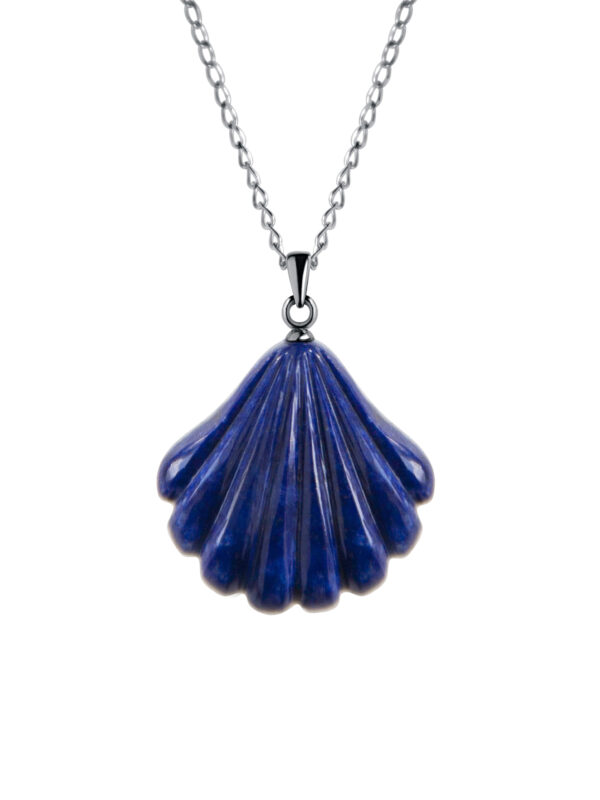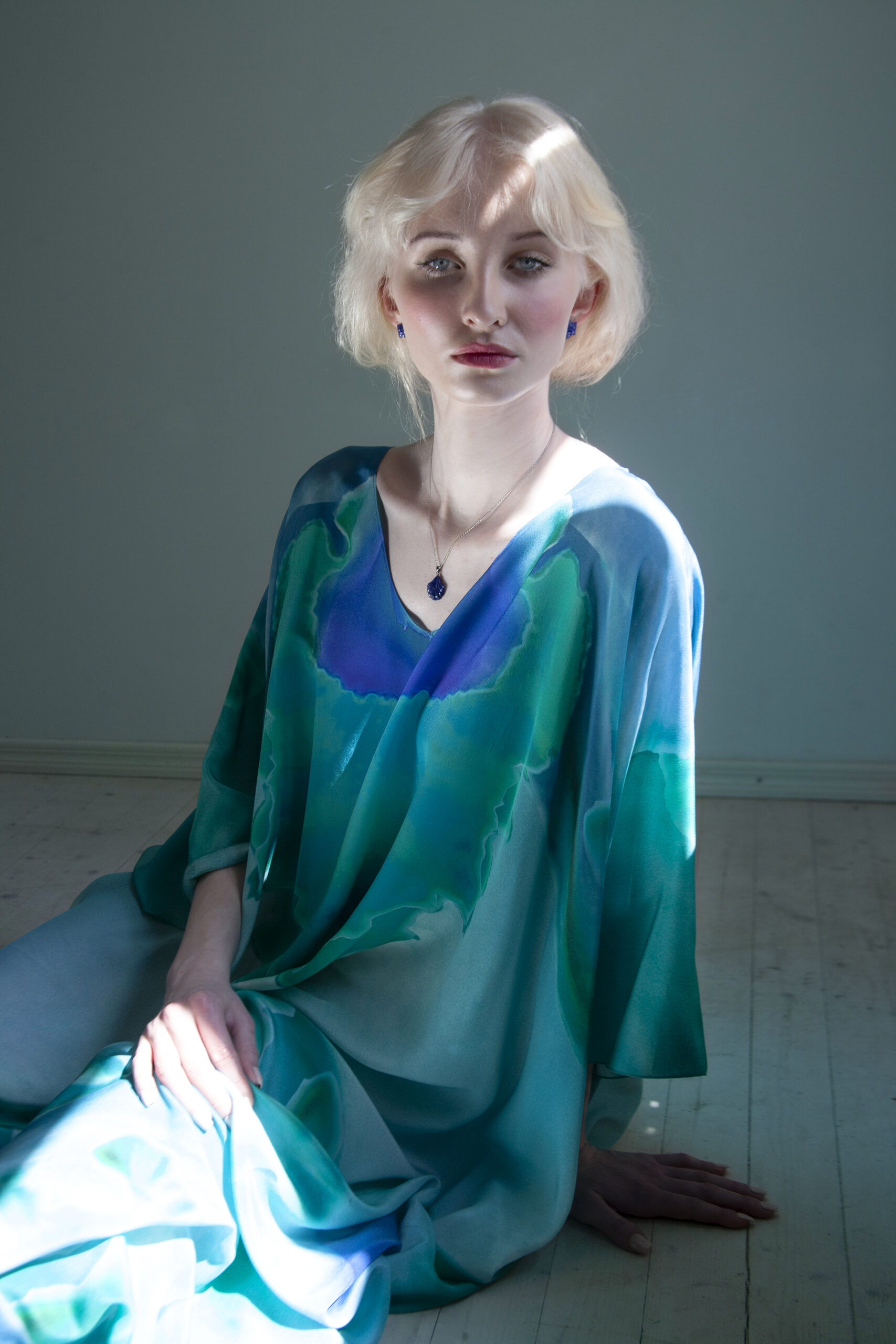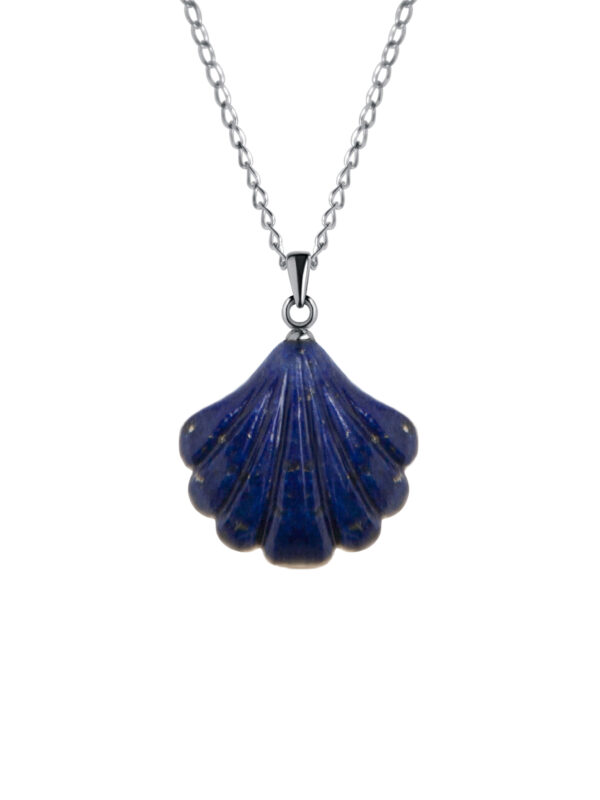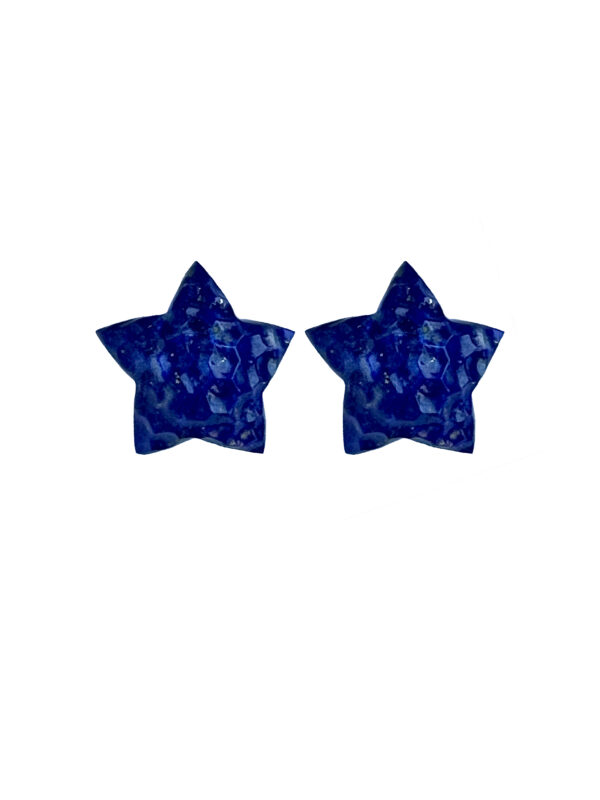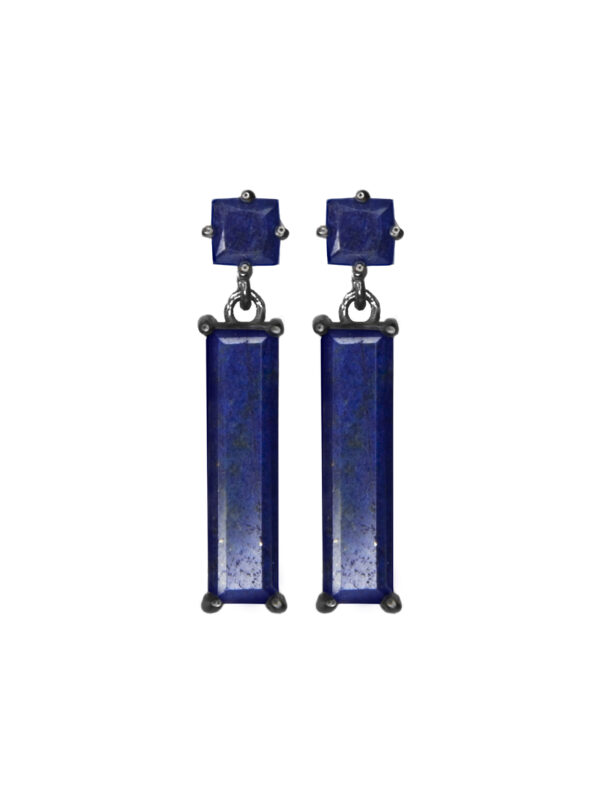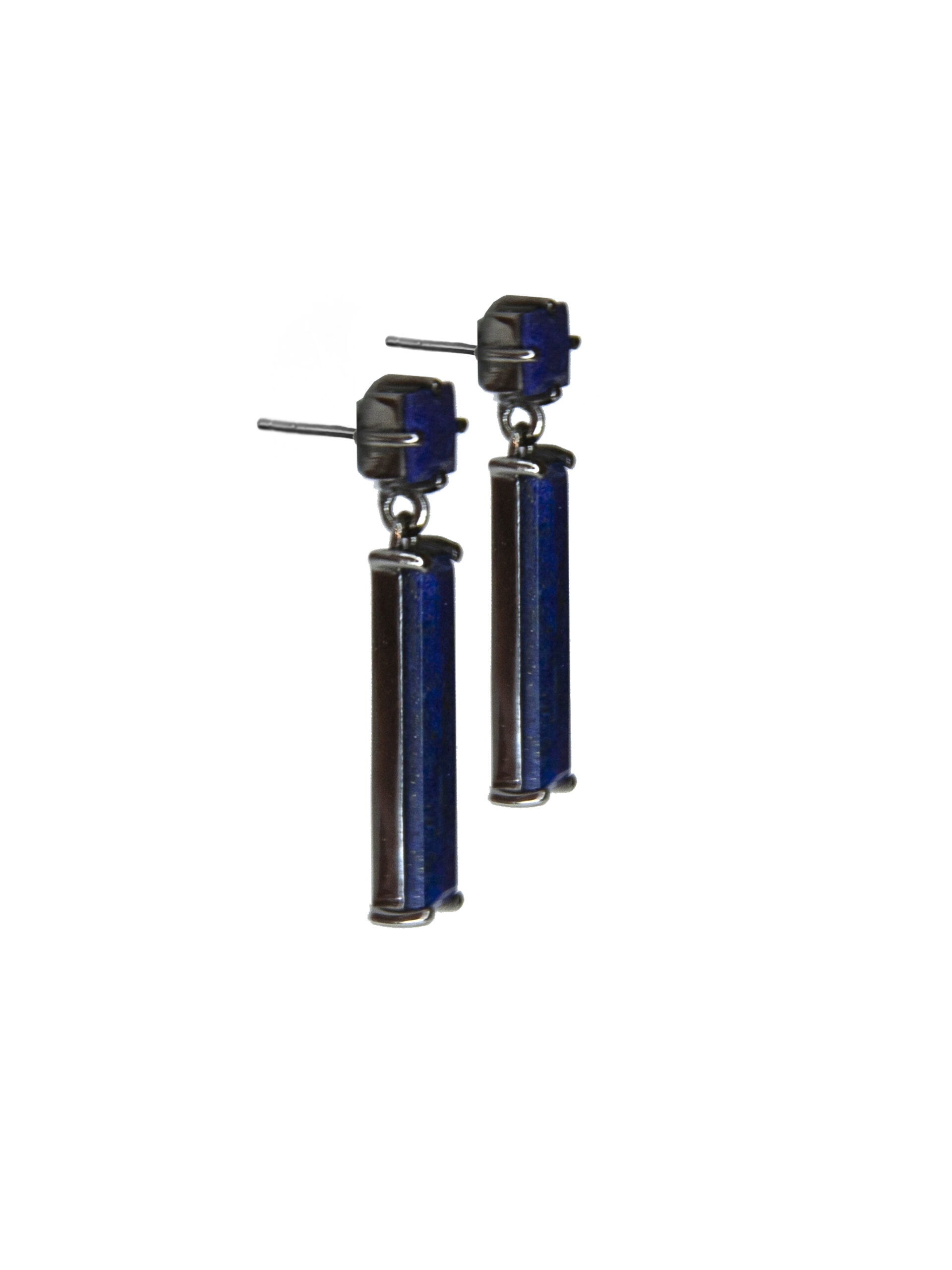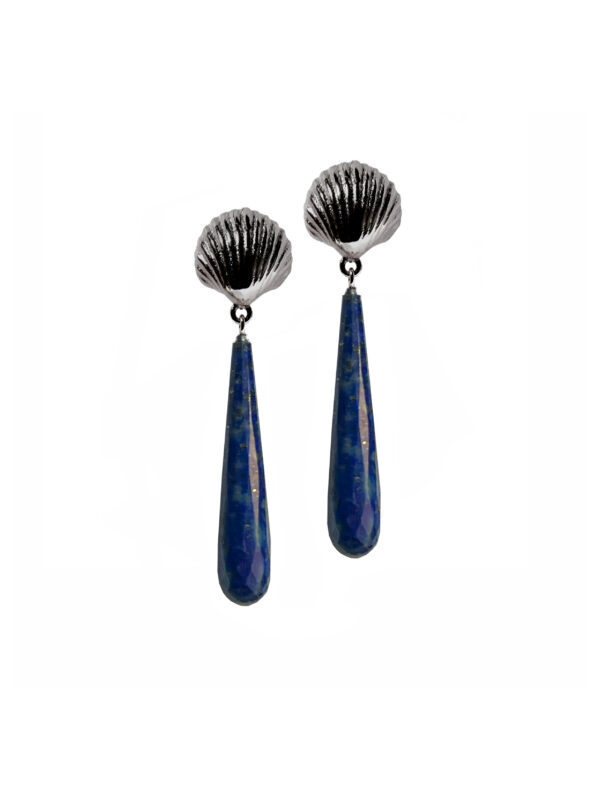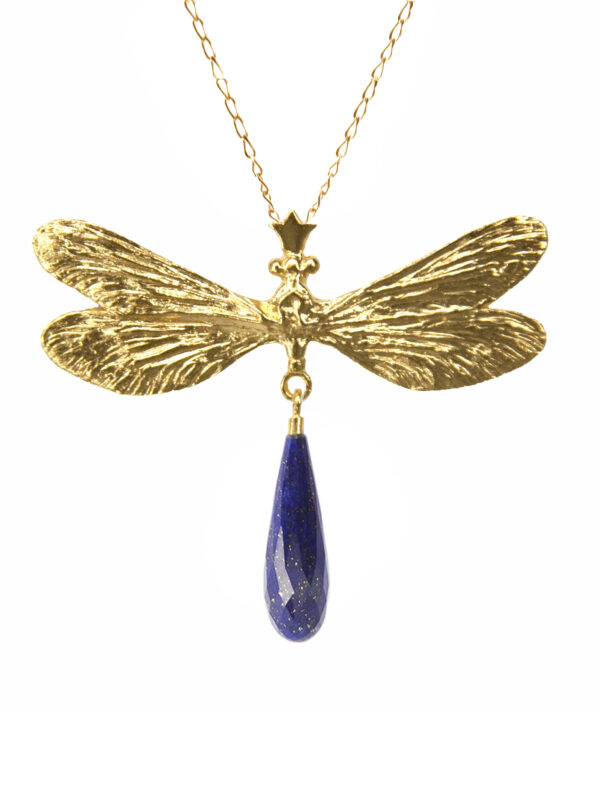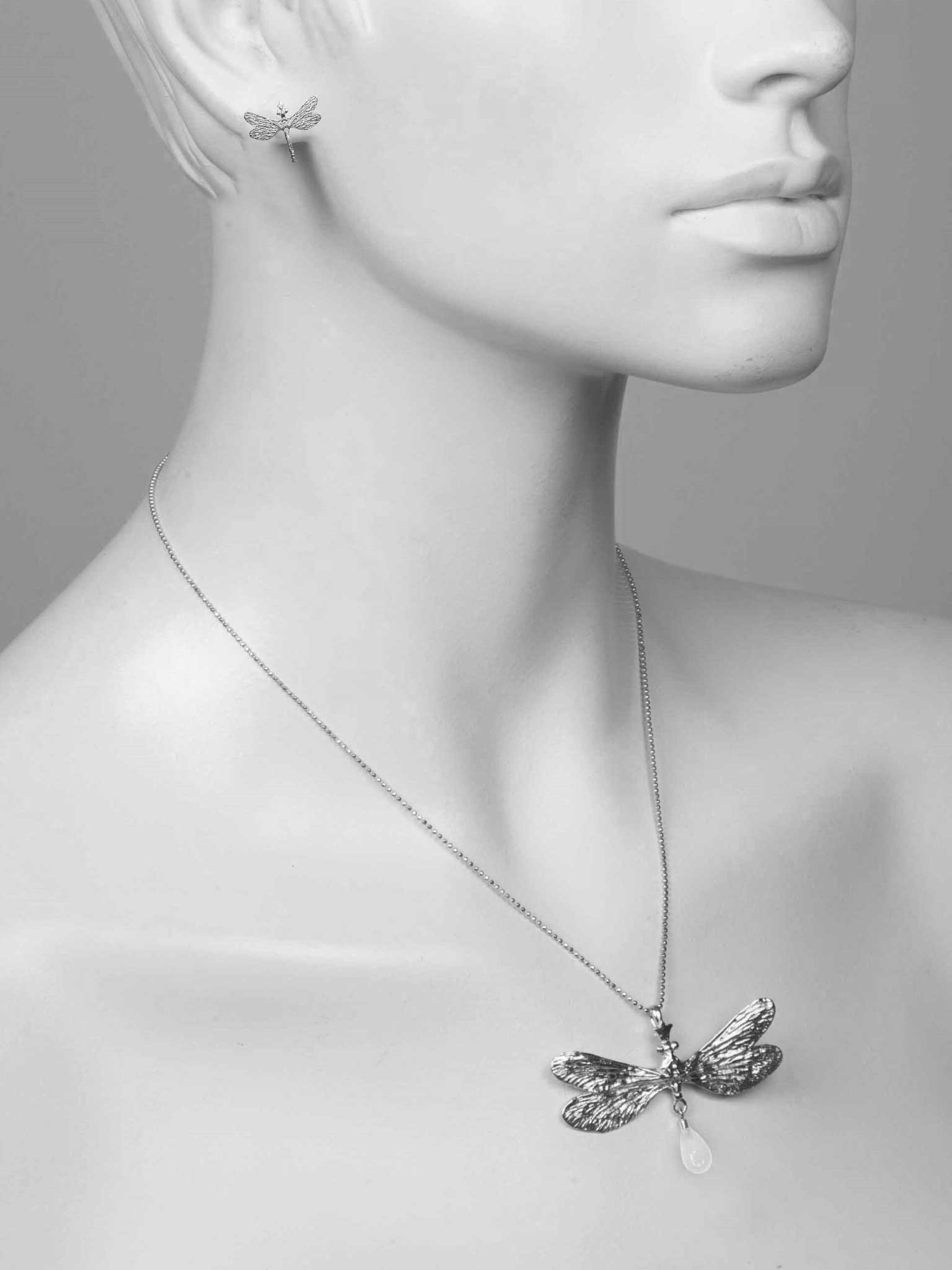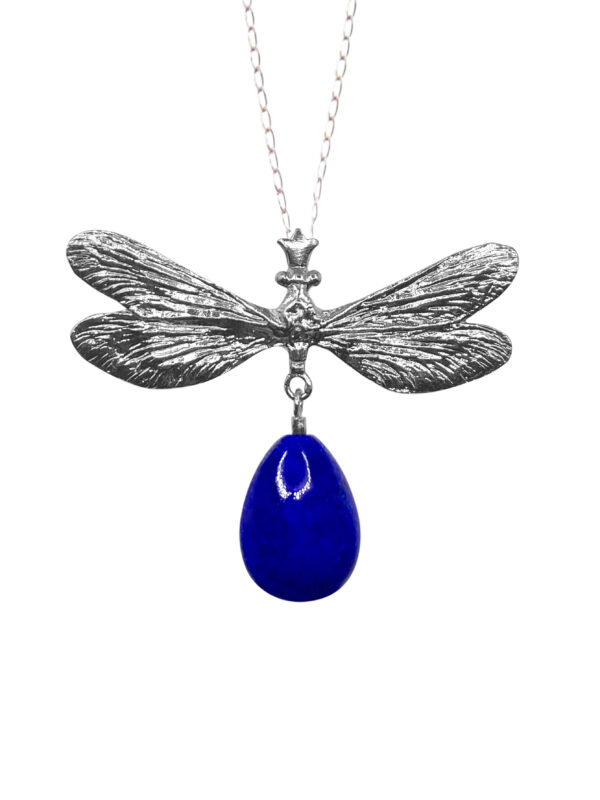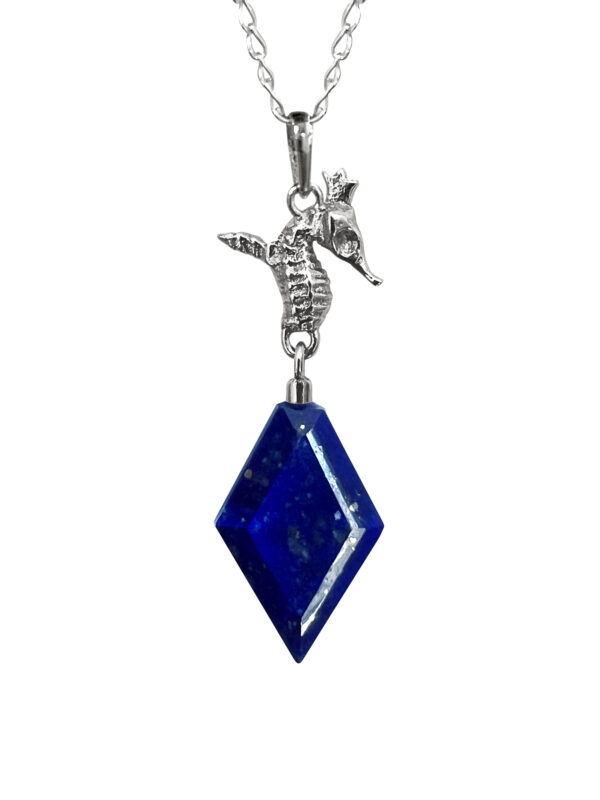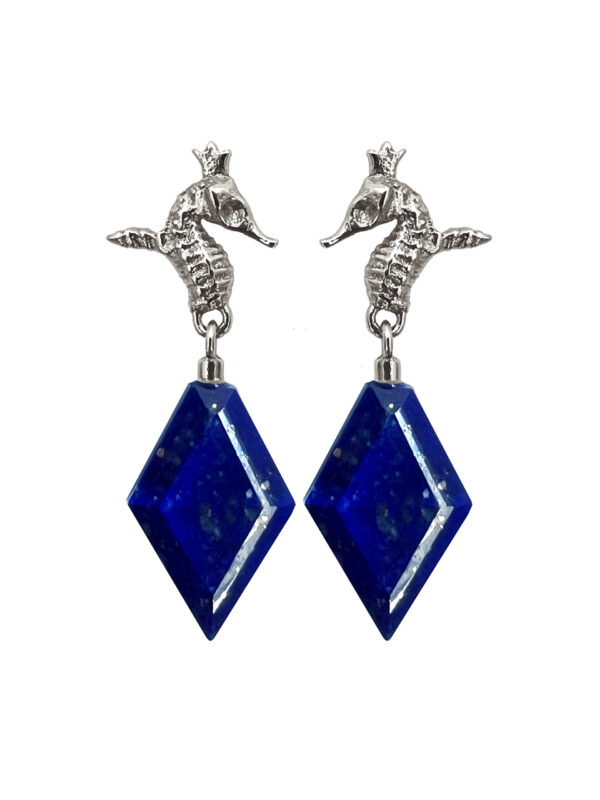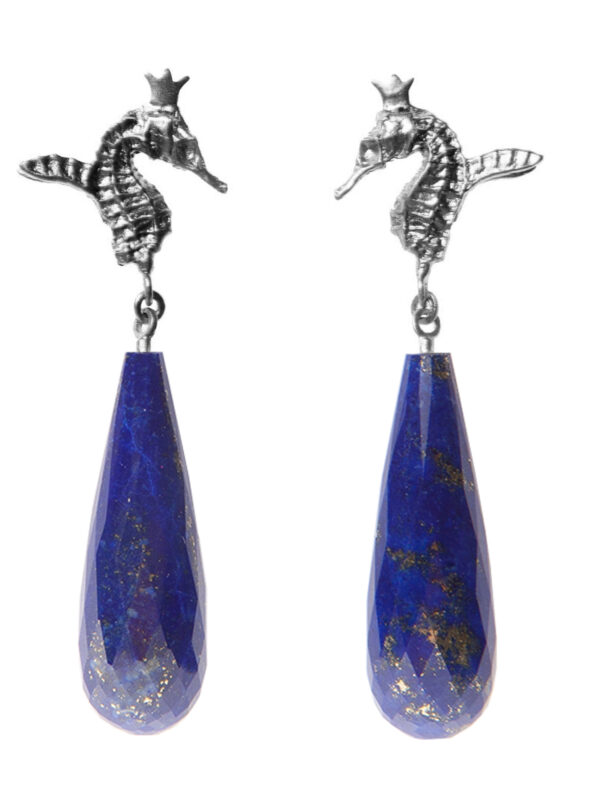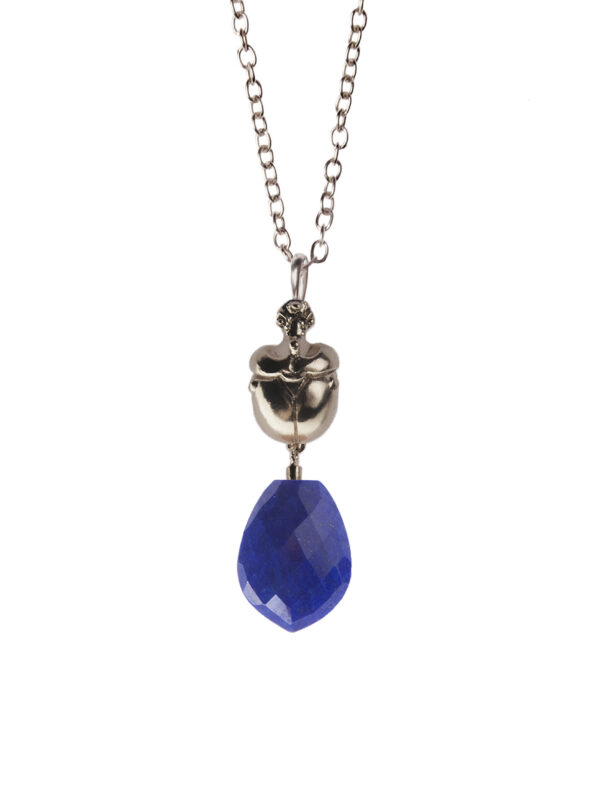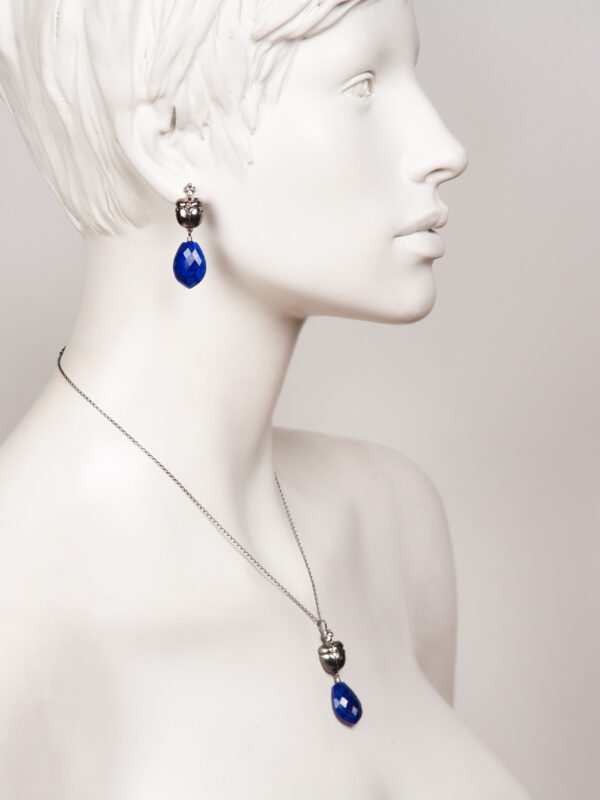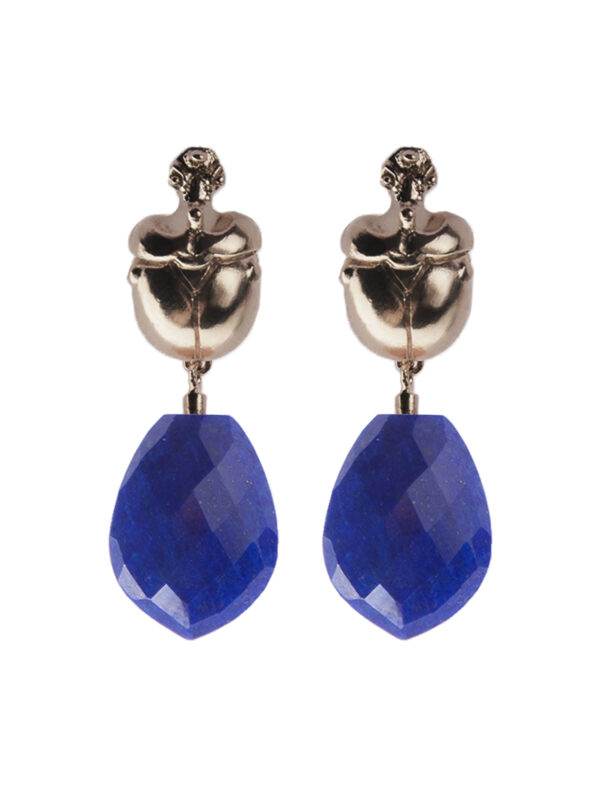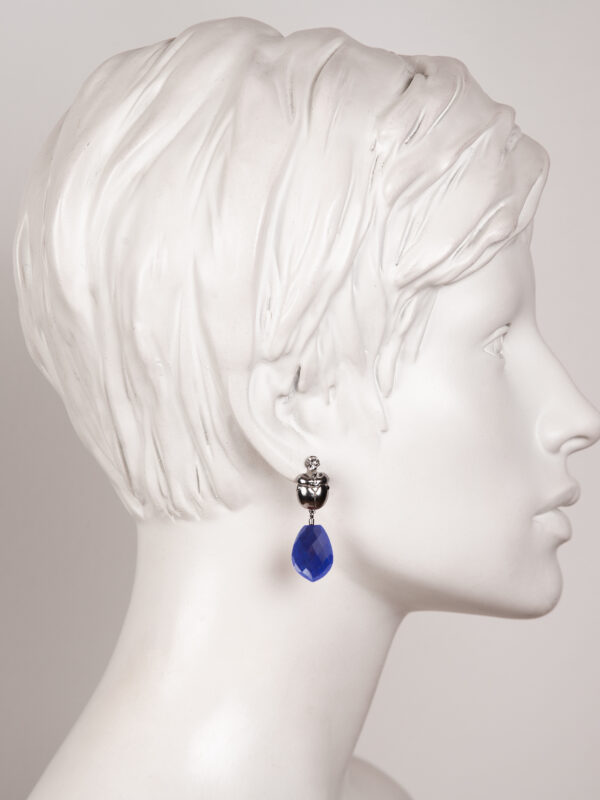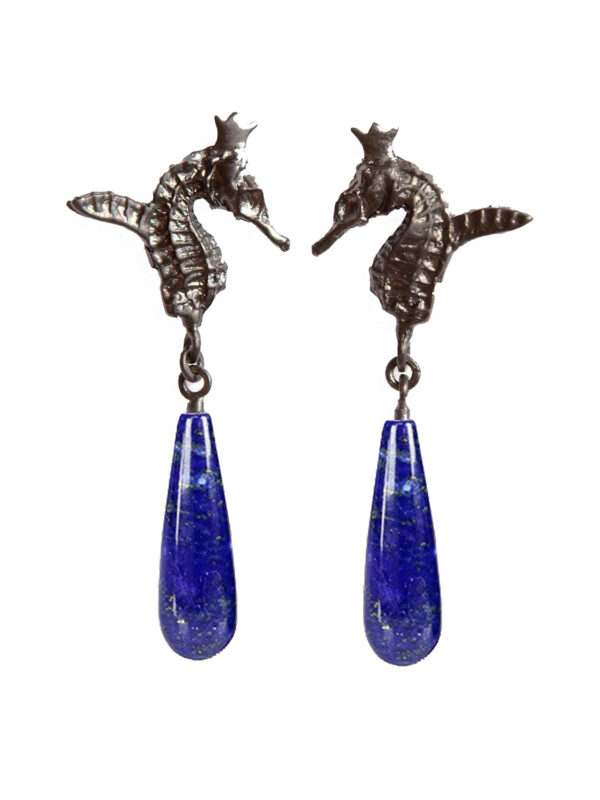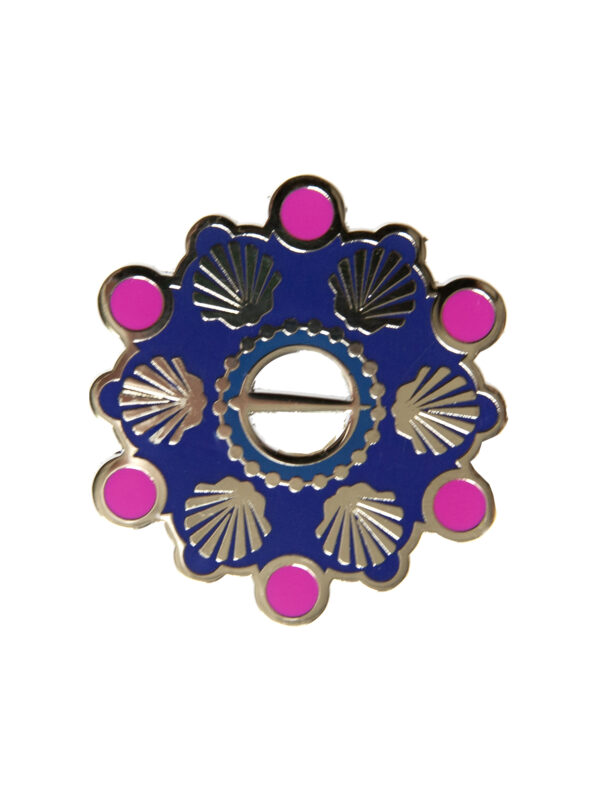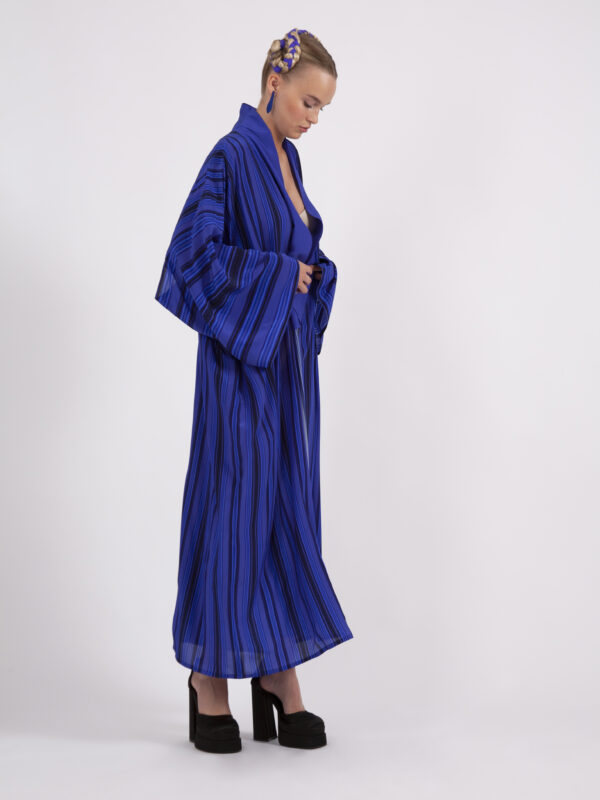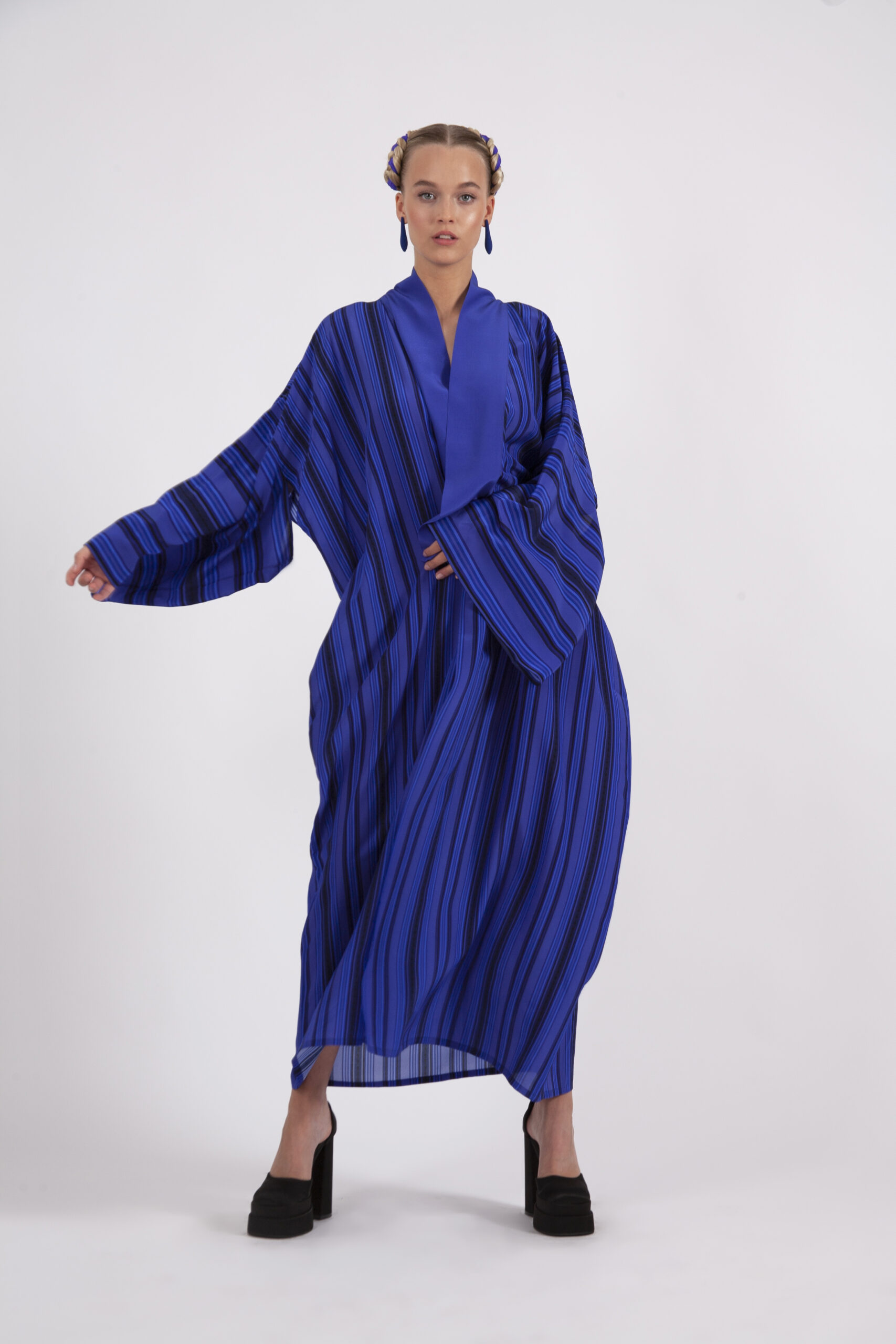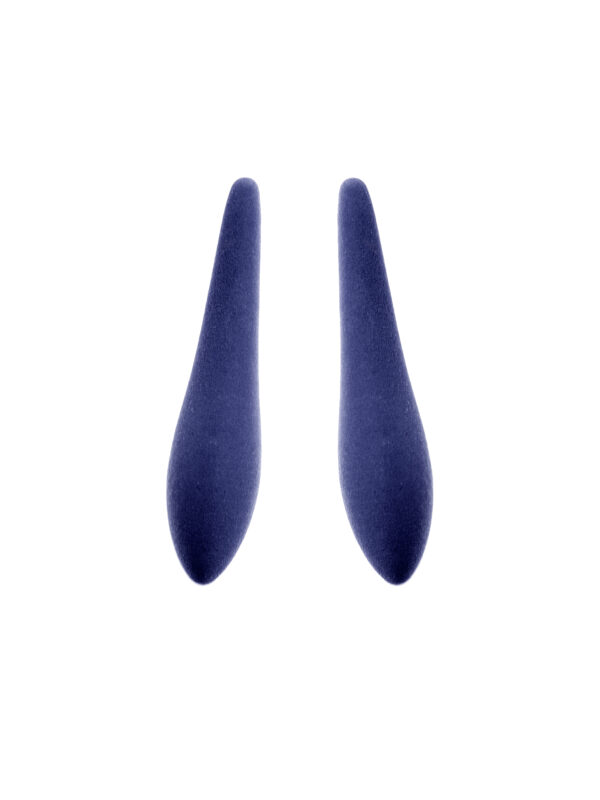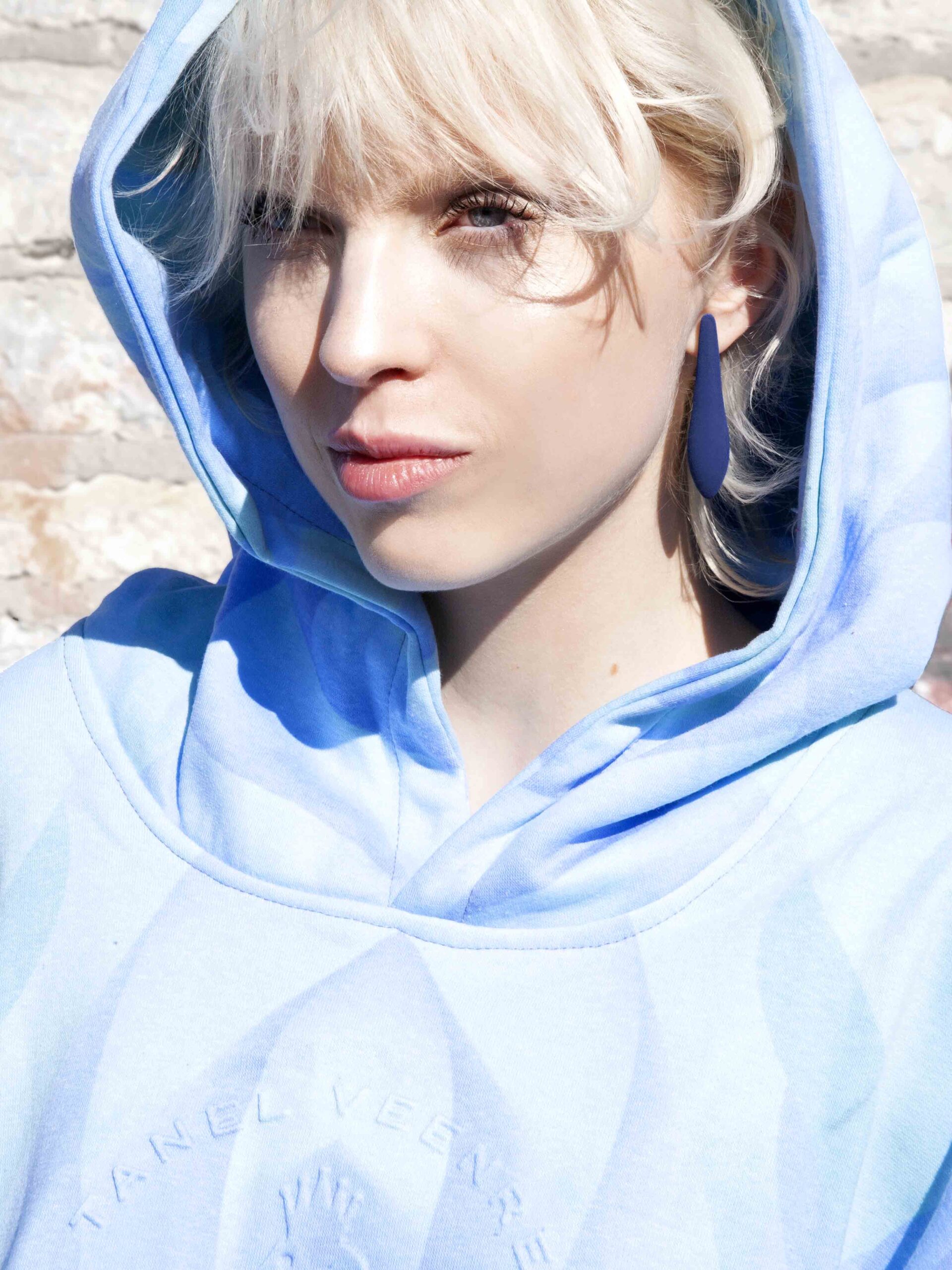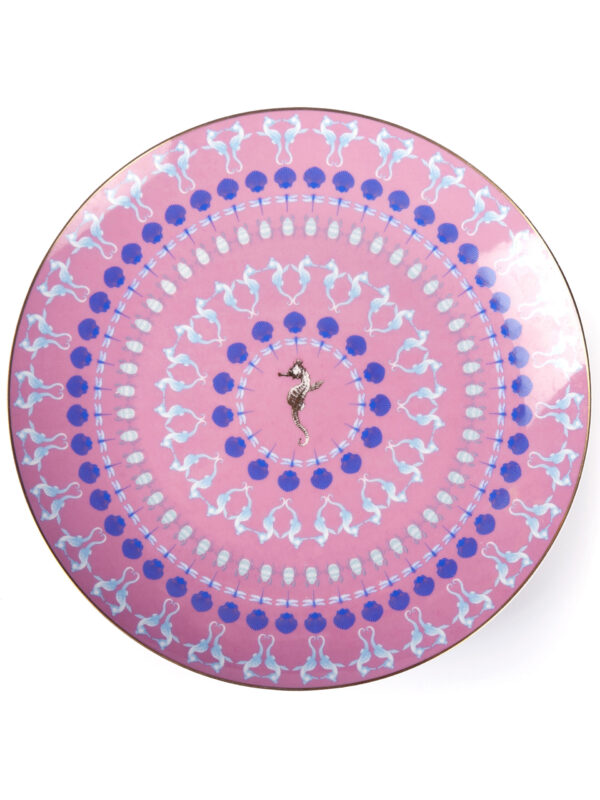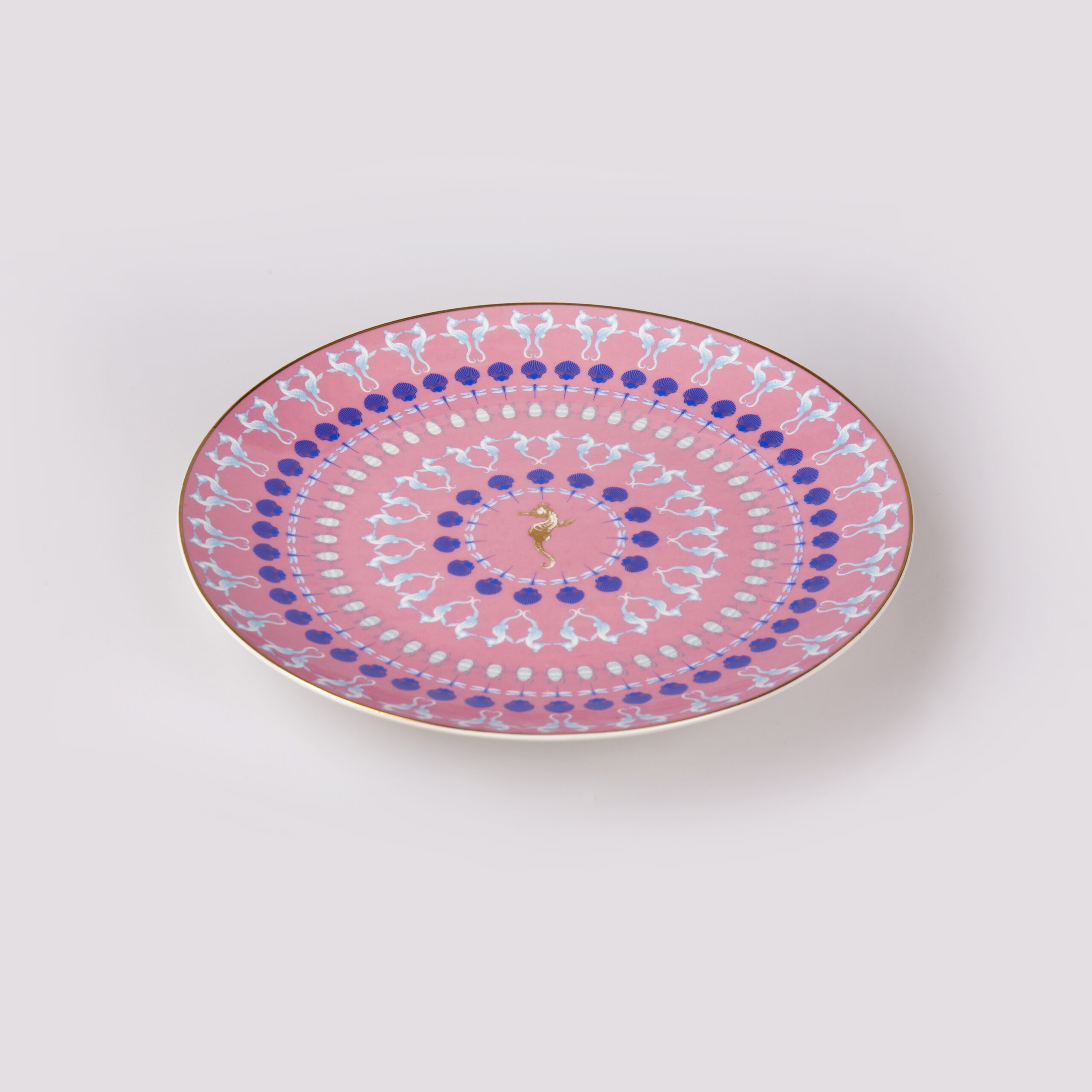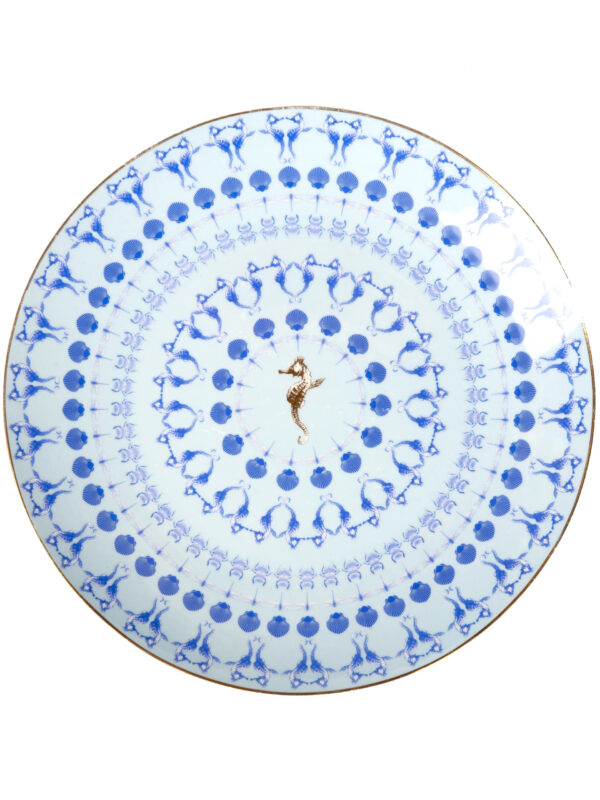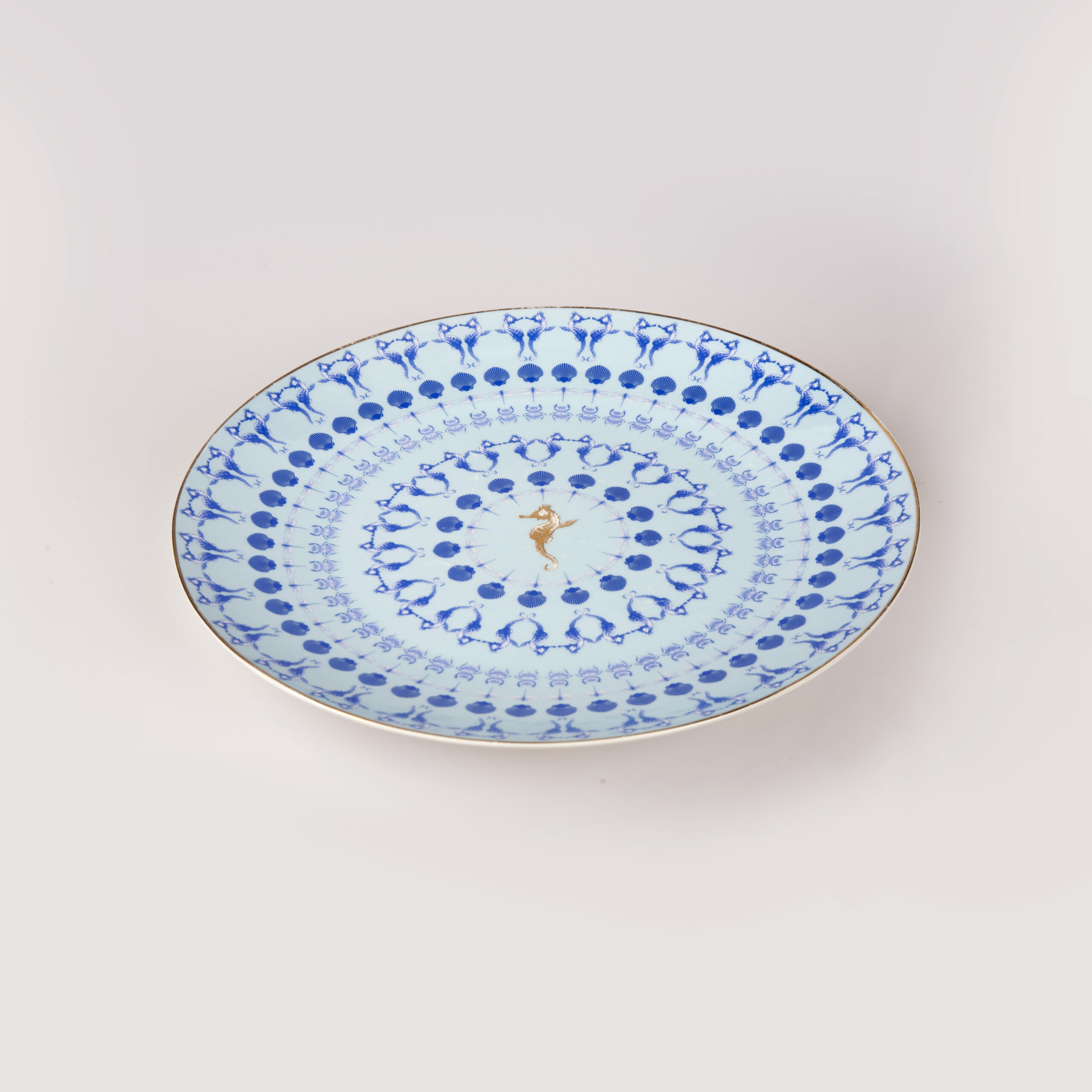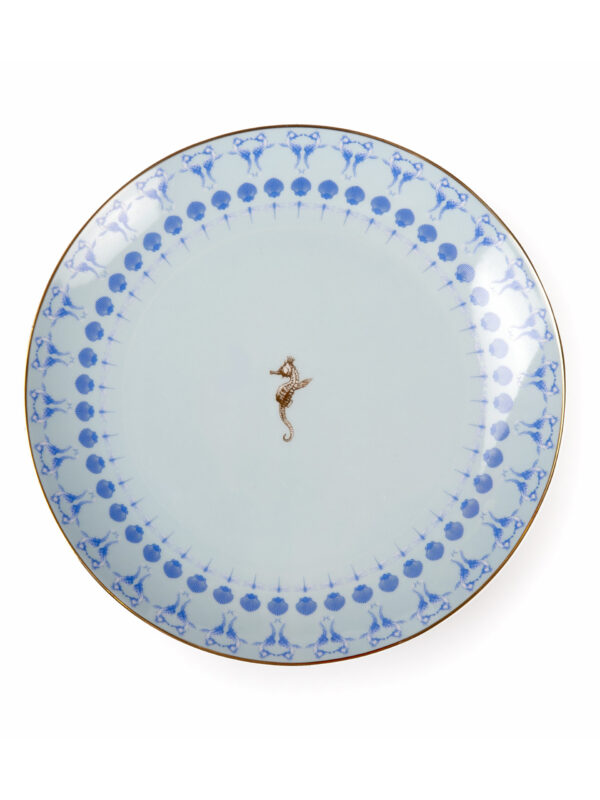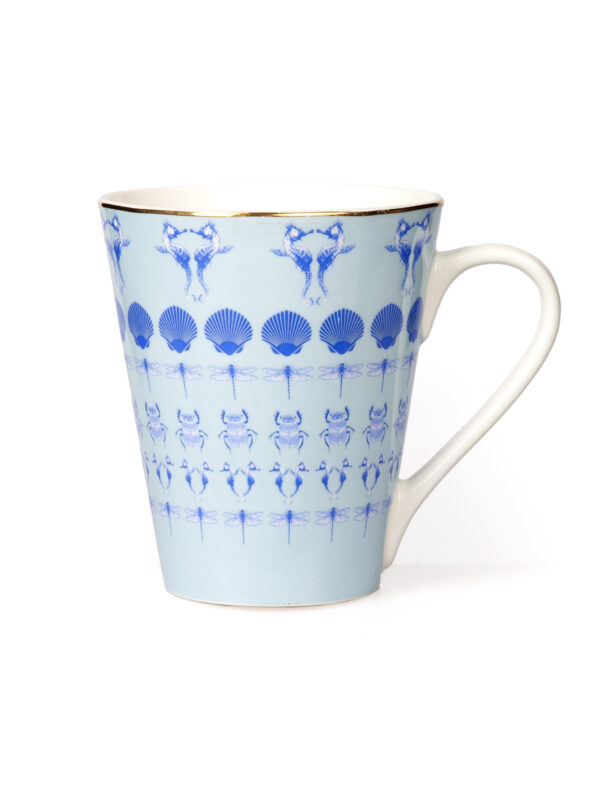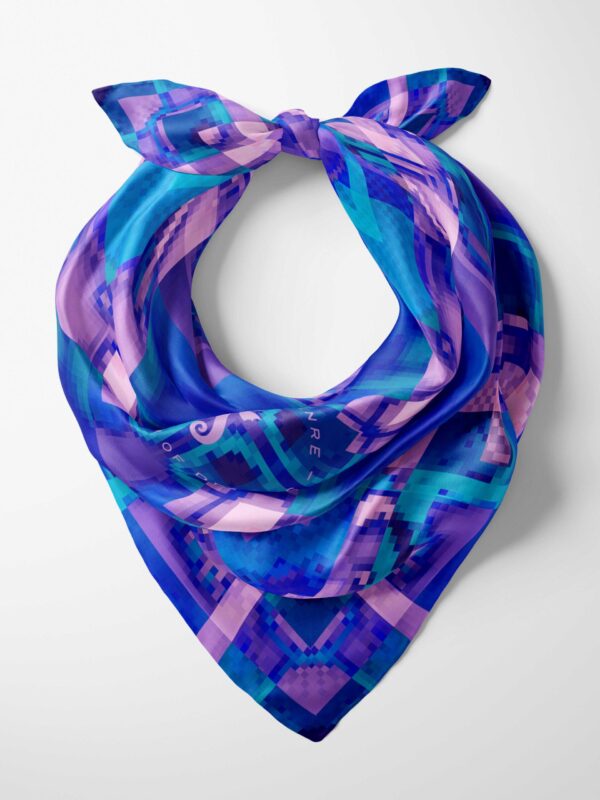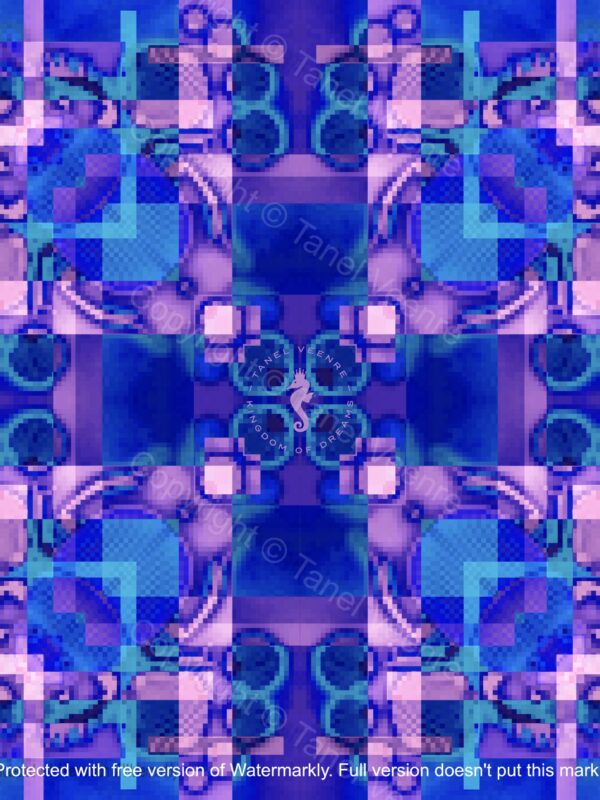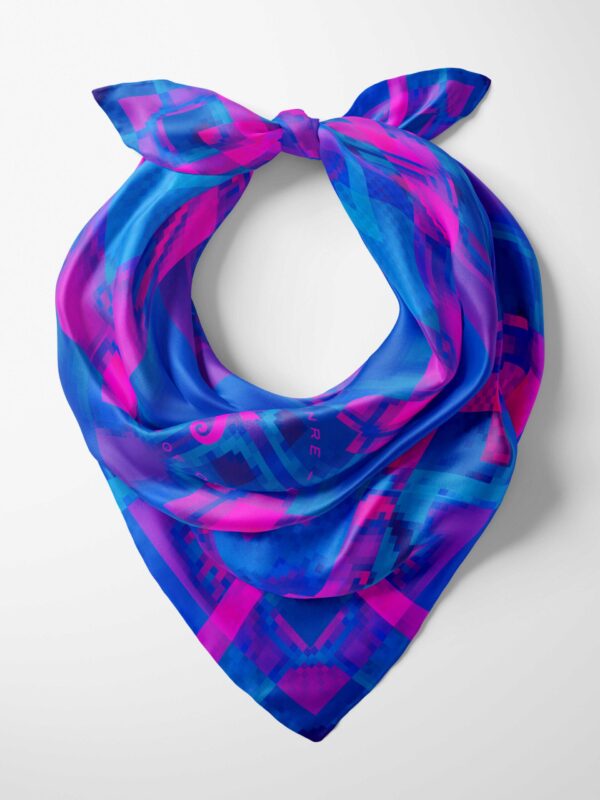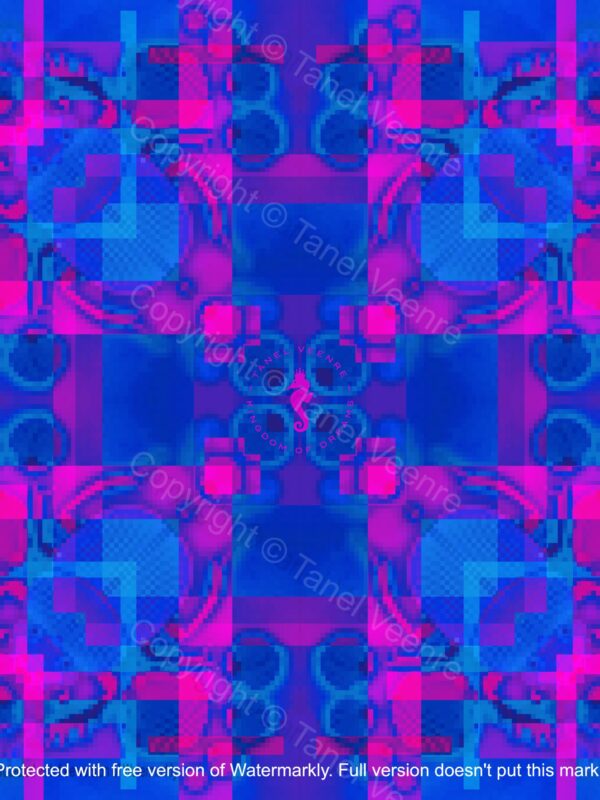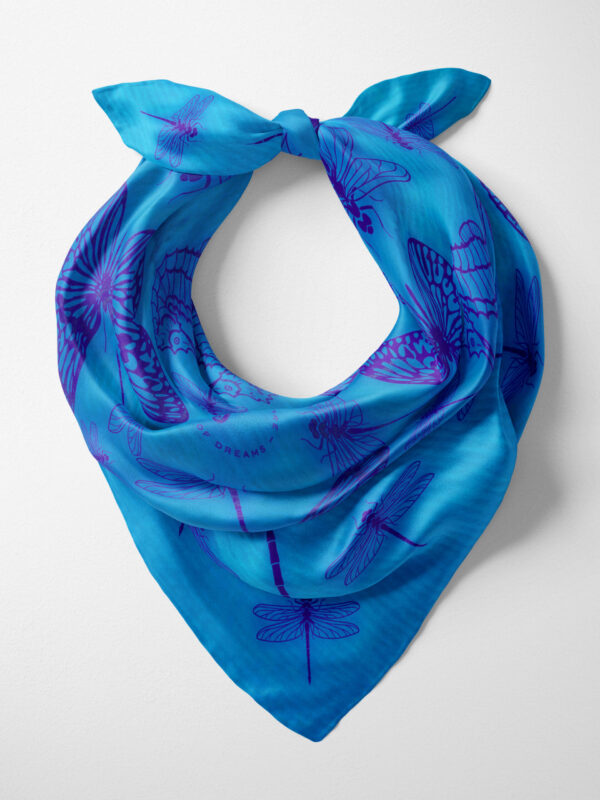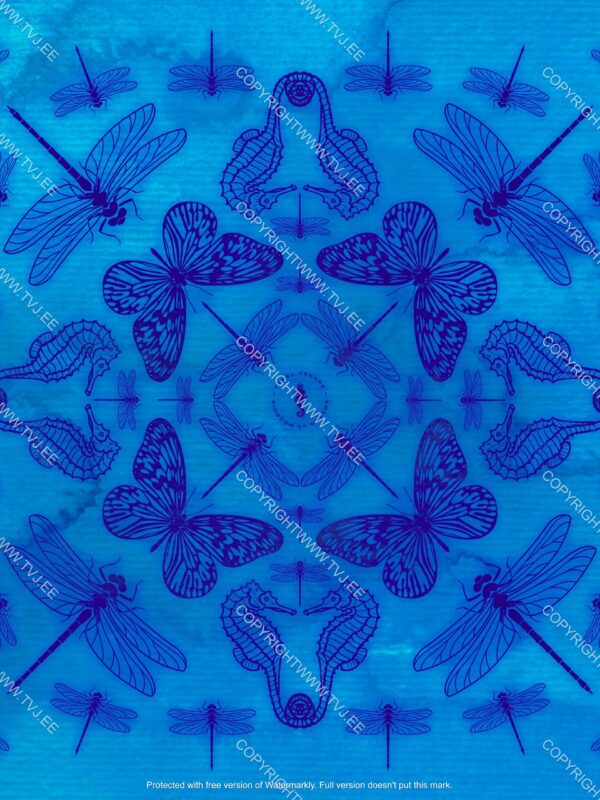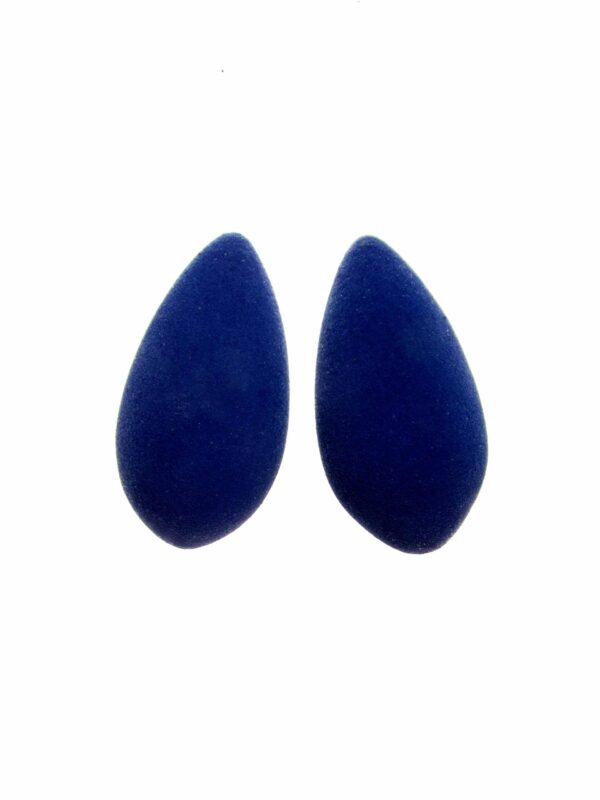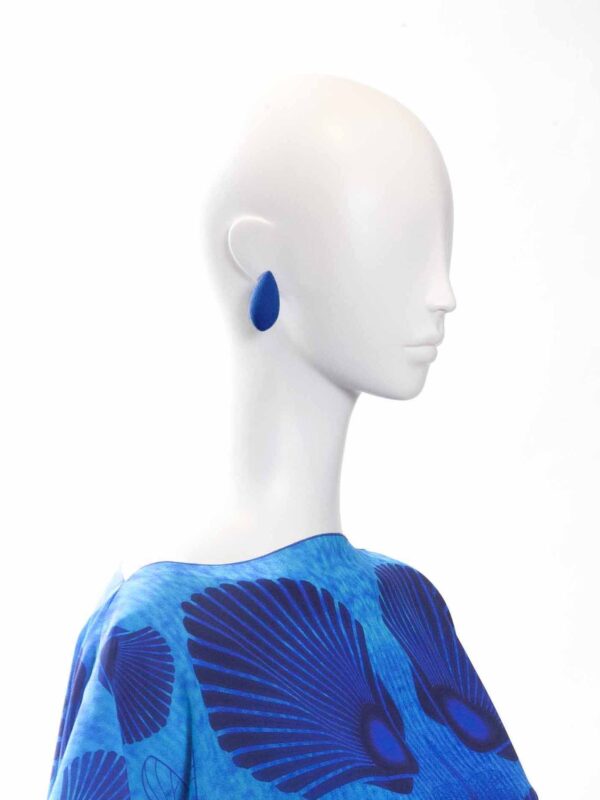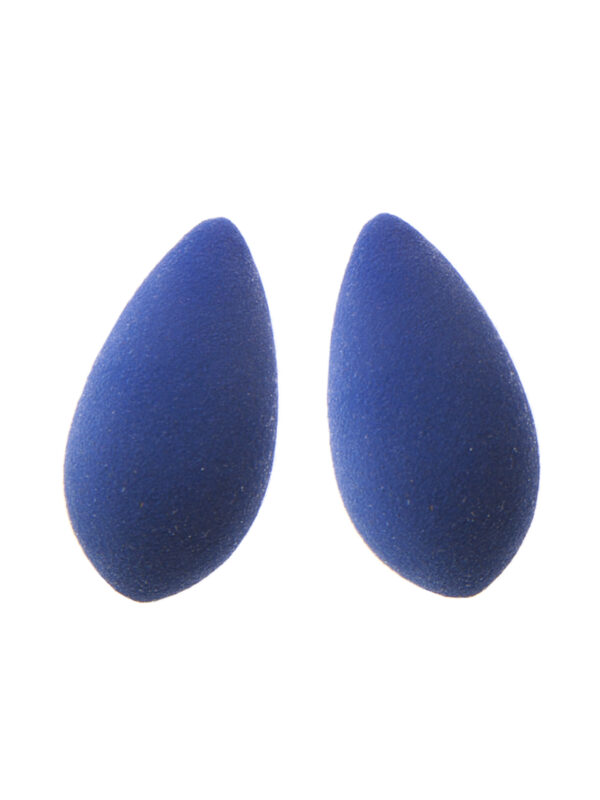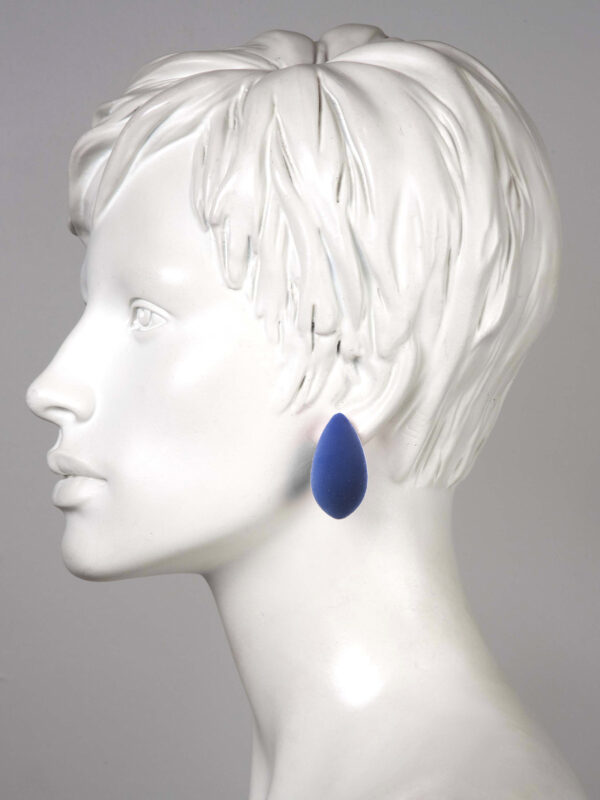The ultramarine blue colour is made from the natural stone lapis lazuli or its synthetic equivalent. Ultramarine is a saturated, dark, violet-tinged blue, but more generally “ultramarine” can simply refer to bright blue.
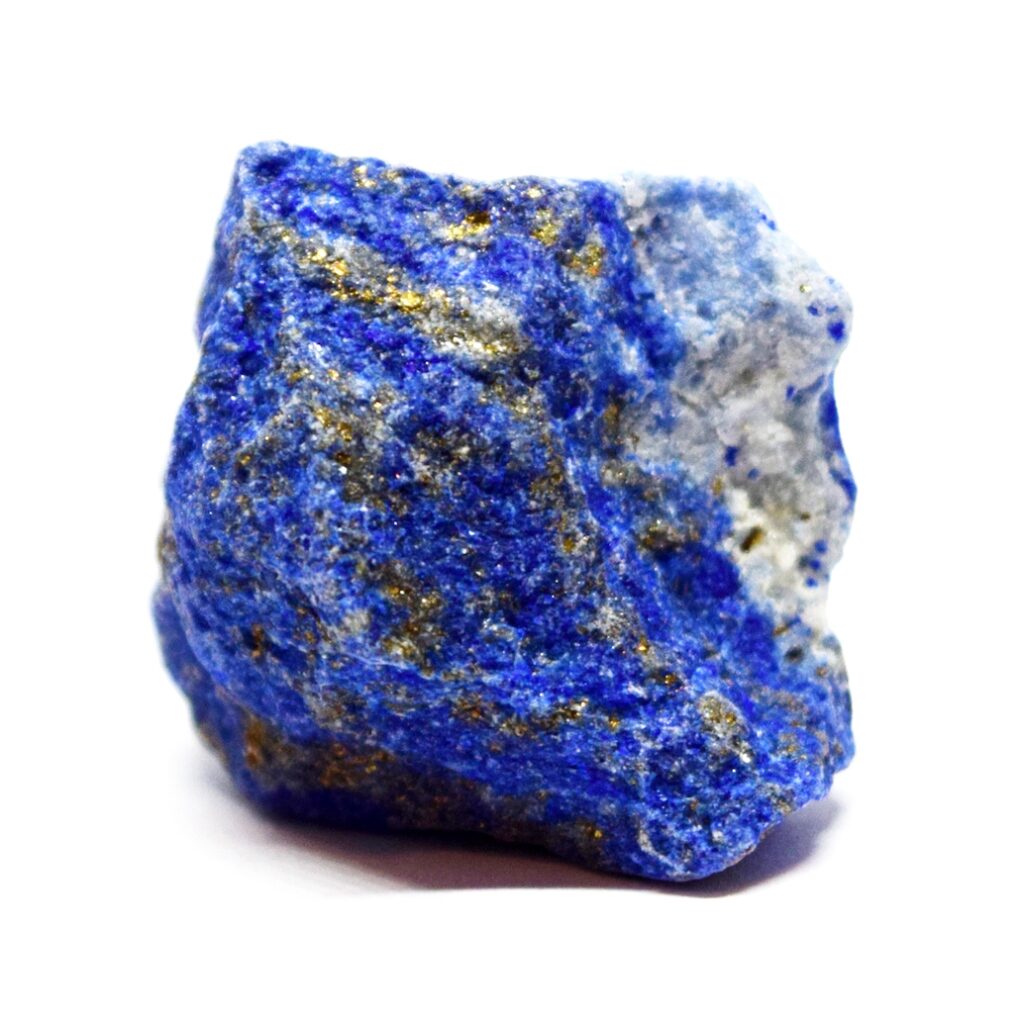
Semi-precious stone lapis lazuli or lasurite
The history of ultramarine blue
During the Renaissance, ultramarine pigment was worth even more than gold. Given its preciousness, artists have often dedicated the colour to their most important people, places or stories, giving it an enigmatic, elusive meaning. For example, the colour was often used for the Virgin Mary’s robes, symbolising holiness and humbleness. Ultramarine remained a valuable pigment until 1826 when synthetic ultramarine was invented.
The name ultramarine comes from the Latin word ultramarinus, which translates as “beyond the sea”. The name comes from Italian merchants who imported the pigment across the sea in the 14th and 15th centuries from the distant mountains of Afghanistan, where some of the earliest cave paintings of the colour date back to 700-800 AD.
European artists used pigment rather sparingly, trying to show piety and spending as a means of expressing devotion. For example, Johannes Vermeer used ultramarine in his work “Girl with a Pearl Earring”, where the girl’s turban is painted with a mixture of ultramarine and lead white, with a thin glaze of pure ultramarine on top.
Putting the colour in a modern context, ancient ultramarine is compared to only one other modern colour variant: International Klein Blue, also known as IKB, created by 20th-century artist Yves Klein in hopes of matching the infinite, mesmerising properties of lapis lazuli.
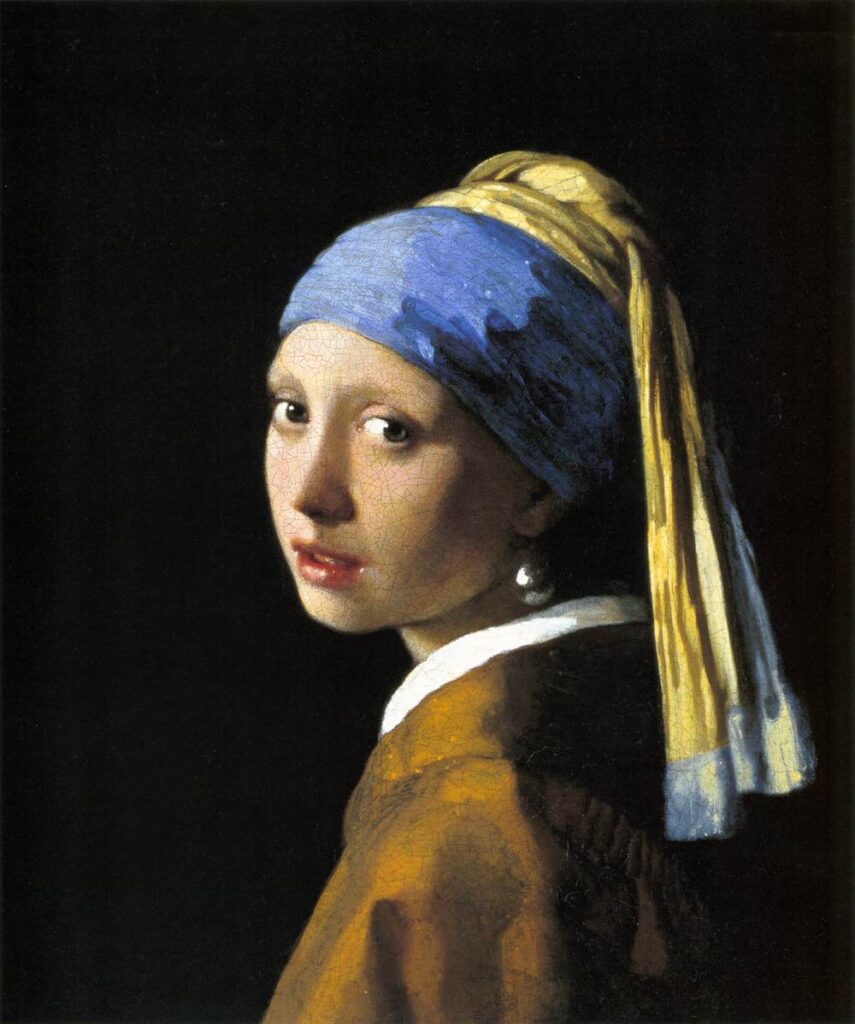
Johannes Vermeer - Girl with a Pearl Earring
Photo: Public domain, via Wikimedia Commons
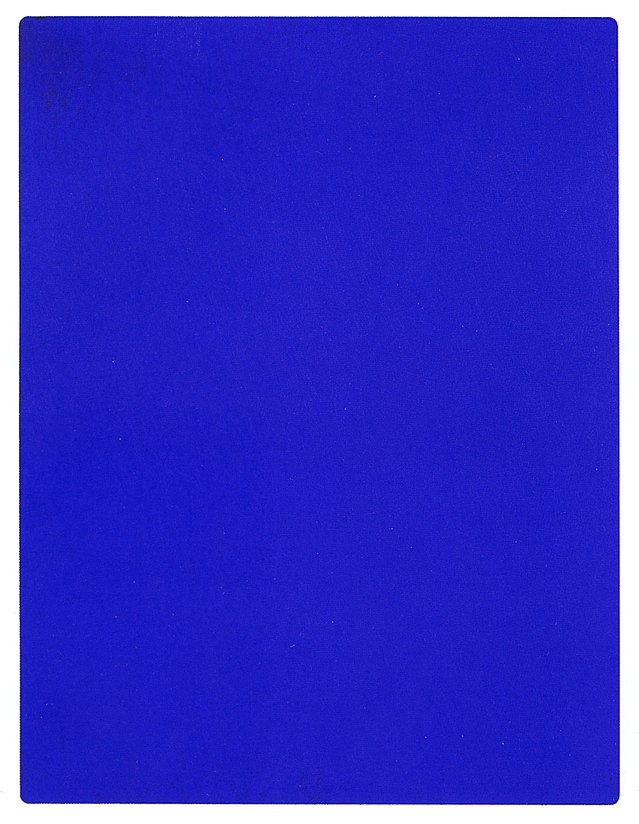
IKB 191, monochromatic painting
by Yves Klein
What to match ultramarine blue with?
The trick on how to make the vibrant shade work smoothly in your wardrobe is quite simple – let it shine.
- The easiest way to wear ultramarine is to pair it with white or cream – blue adds a bright pop to white without trying too hard.
- Monochromy also works well with ultramarine, so feel free to match the same shade of blue or green.
- For a bolder look, add pink, red or orange to ultramarine.
Ultramarine blue has high energy. Its vibrant and mesmerising glow is so powerful that it attracts attention even when used in small amounts. The colour can be described with the keywords compassionate, dignified, moving and soulful. This blue strives forward, embraces, and is soulful and alive, containing warmth and emotion. Ultramarine conveys luxury and abundance.
Ultramarine on the fashion scene
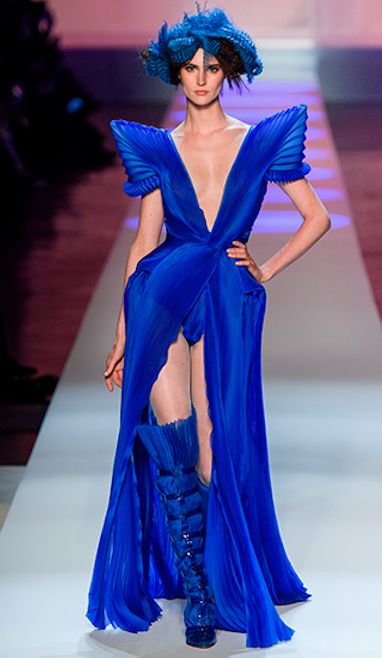
Jean Paul Gaultier' spring 2019 Couture collection
Photos: designitaly.com, simons.com
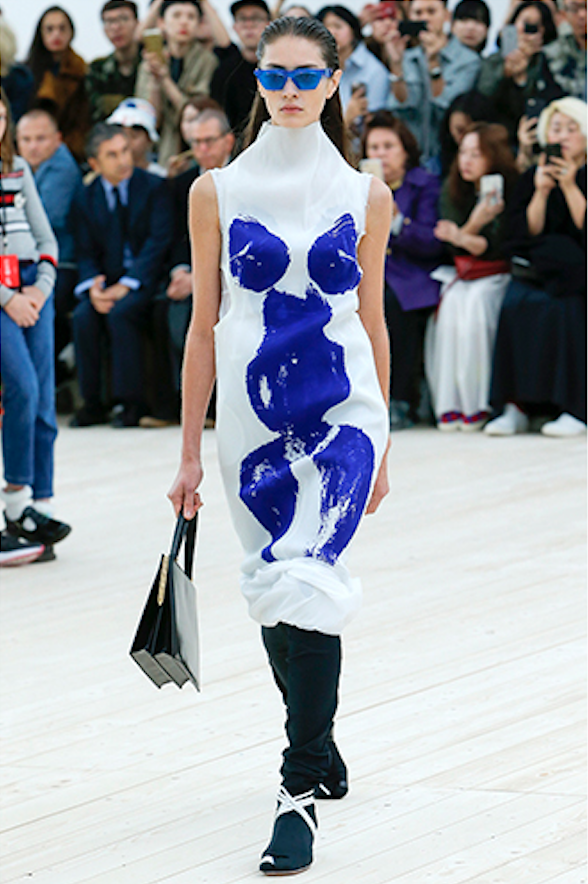
Designer Phoebe Philo 2017 spring collection
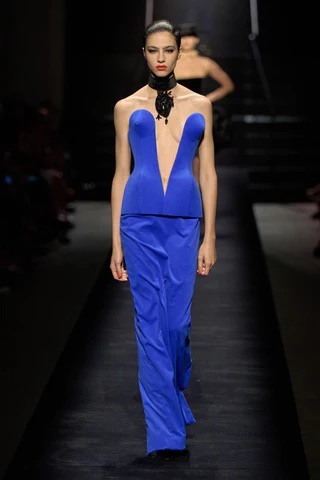
The designer Paola Navone presented her blue collection at Milan Fashion Week 2022
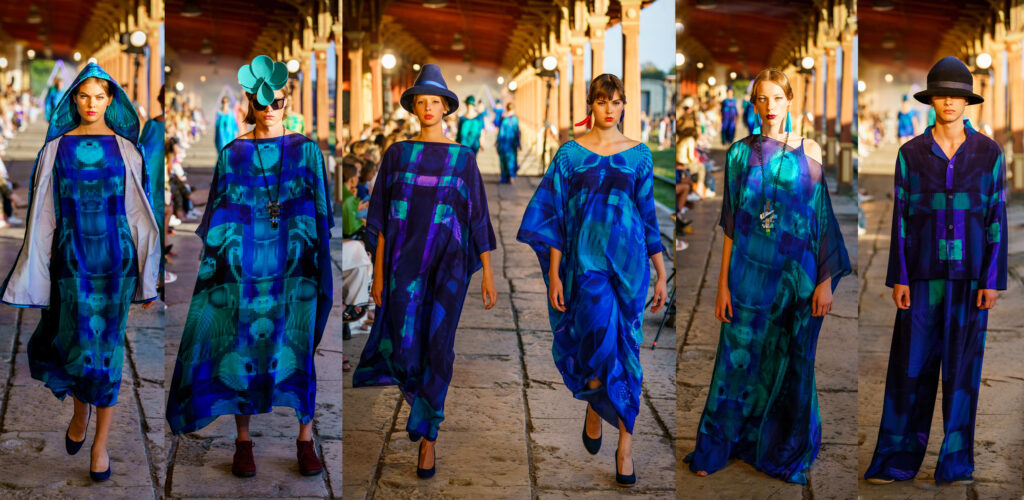
Tanel Veenre's 2021 collection Titan, on the stage of the fashion show Portal
Tanel Veenre and his ultramarine love story
“Pure ultramarine cannot be disputed, it is definitely one of the most energetic colours ever. Although I prefer dustier blues as a wearer, as an artist, ultramarine blue is one of my big favourites.
This colour seems to come from somewhere deep, and the blue glow is just a surface flicker. Ultramarine gets its most powerful shine with gold or pure red, it literally explodes next to them. At the same time, there is a sensitive poeticism in this tone, it hits with a velvet whip.”
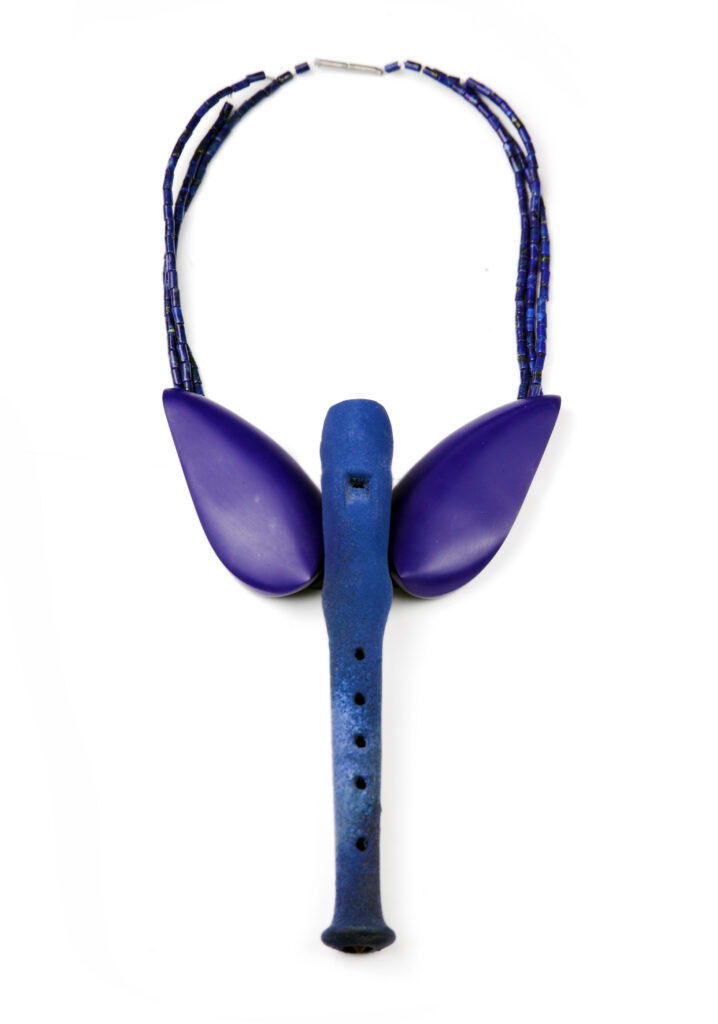
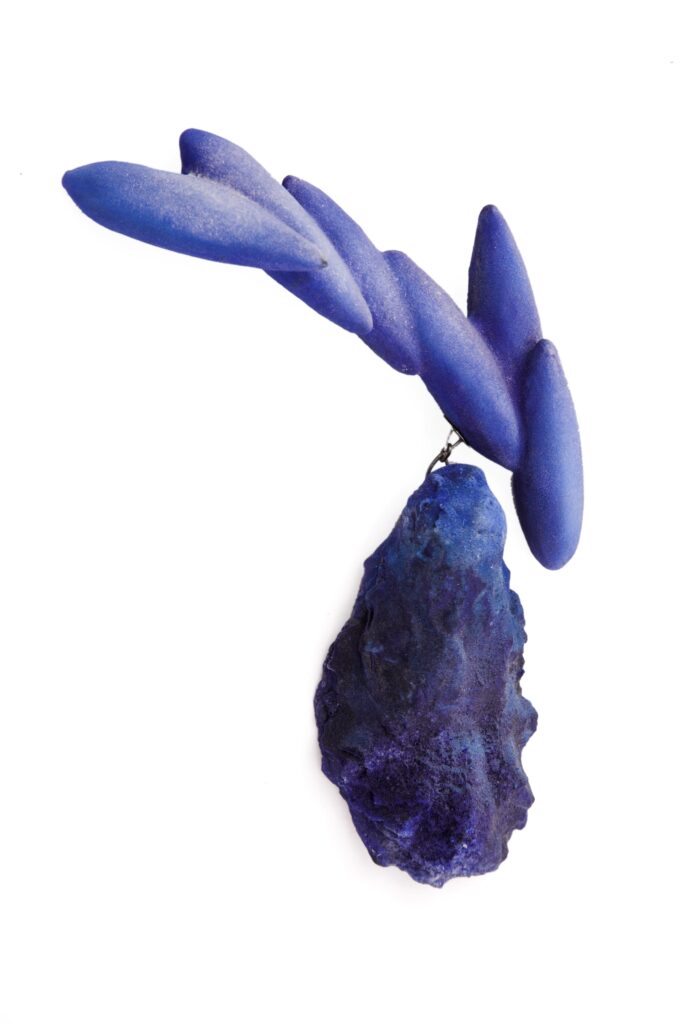
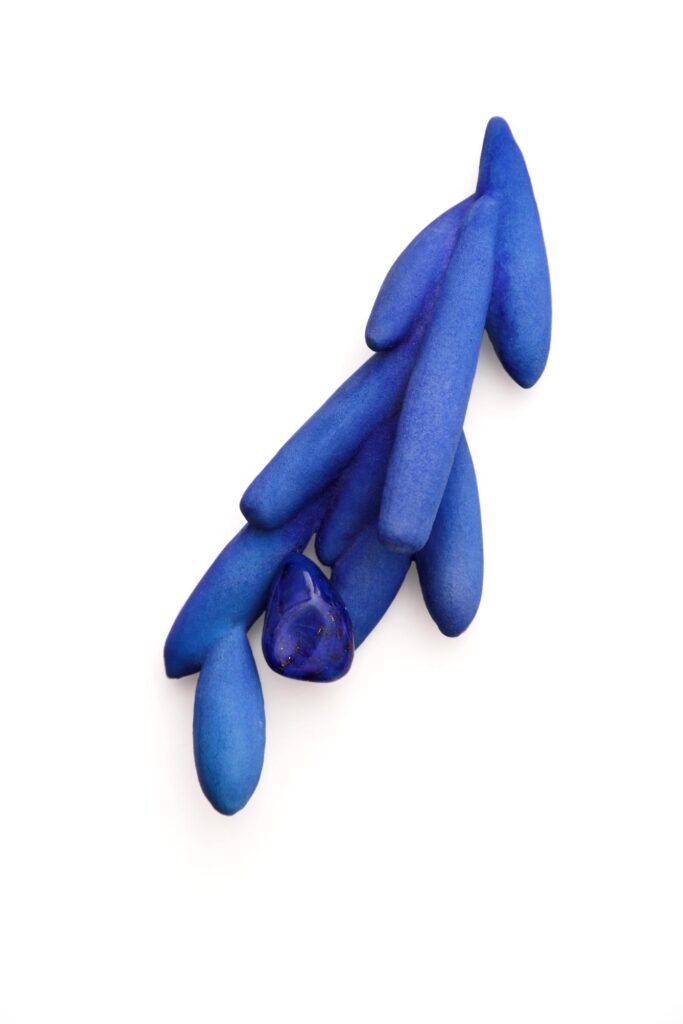
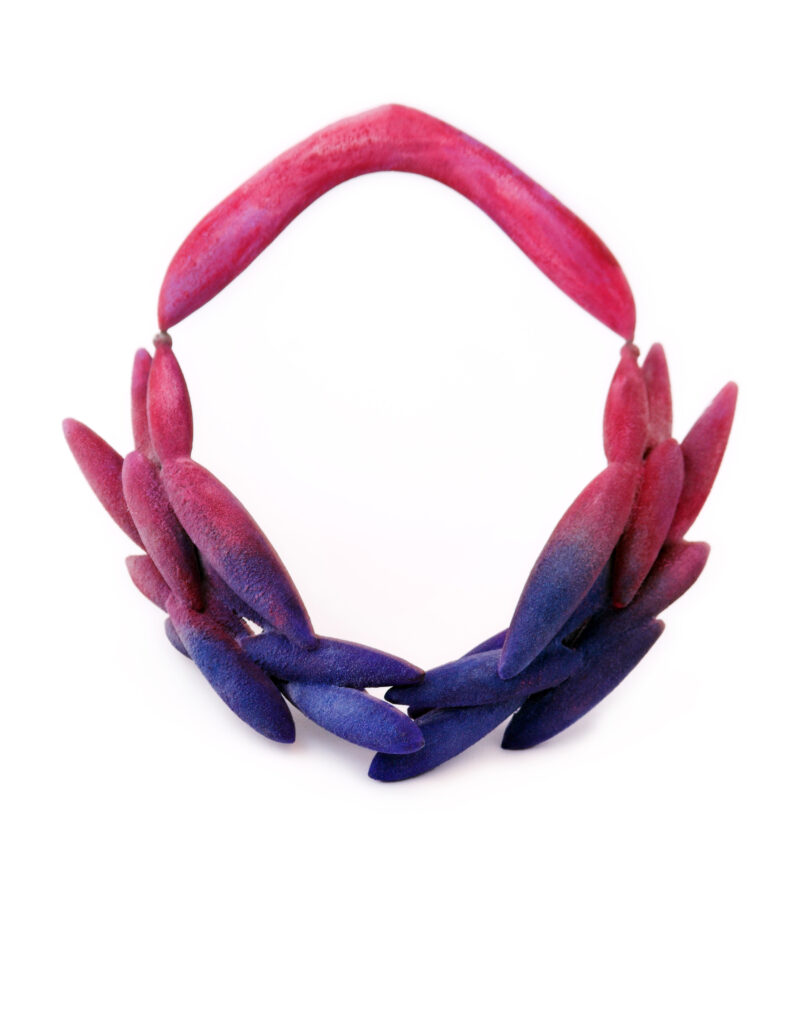
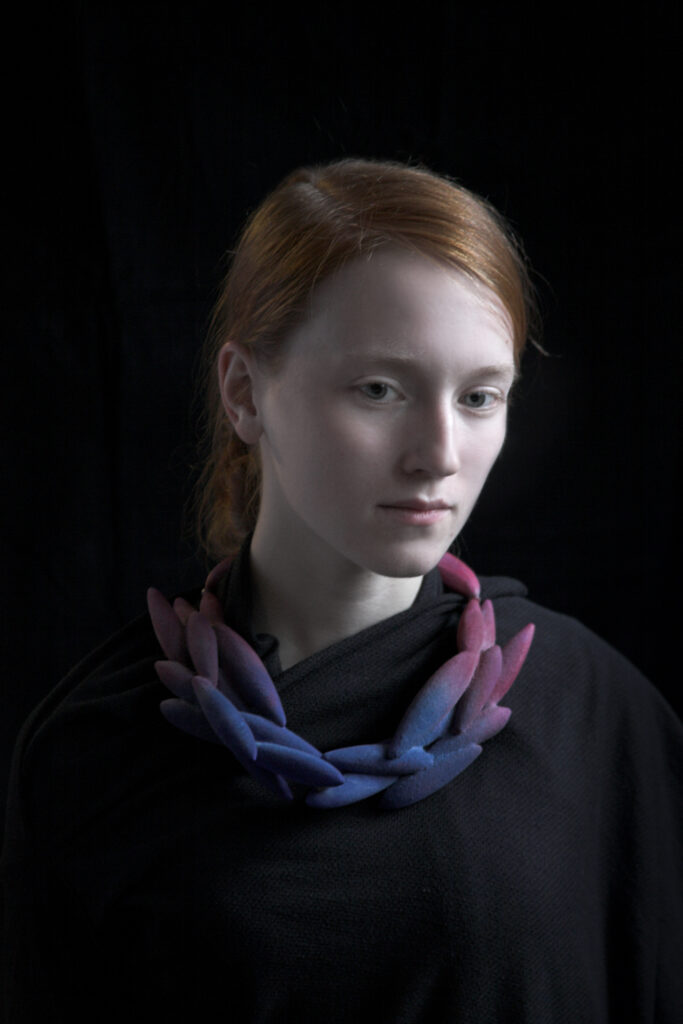
Examples of Tanel Veenre's jewellery art, where ultramarine plays a prominent role.
Brooches "Order to the arrival" and "Oliivioks" and necklaces "Victory Wreath" and "Magic Flute".
-
Titan Silk Scarf
59.00 € – 95.00 € Select options This product has multiple variants. The options may be chosen on the product page -
Titan Silk Scarf
59.00 € – 95.00 € Select options This product has multiple variants. The options may be chosen on the product page -
Venus Silk Scarf
59.00 € – 95.00 € Select options This product has multiple variants. The options may be chosen on the product page

